For centuries, the idea of around what was classically deemed “high-art” was about accurately representing things. But, when Claude Monet came on the scene, he changed the game entirely. Monet was seen as one of the first modern painters. Rather than capturing an almost photographic representation of the scene in front of him, he wanted to bottle the colour and light he saw all around him.
But today, when we look at this artwork, we don’t find his images as controversial as they once were. Our modern eyes think of Monet as old-fashioned, and it’s hard to imagine how these paintings once shocked the world. So how can we translate the power these paintings once held to a modern audience? Well, Beyond Monet aims to do just that.

Last weekend I had the pleasure of attending the opening week of Beyond Monet in Toronto. I had previously attended Beyond Van Gogh in Calgary and was excited to see the next iteration from the “Beyond” creators.
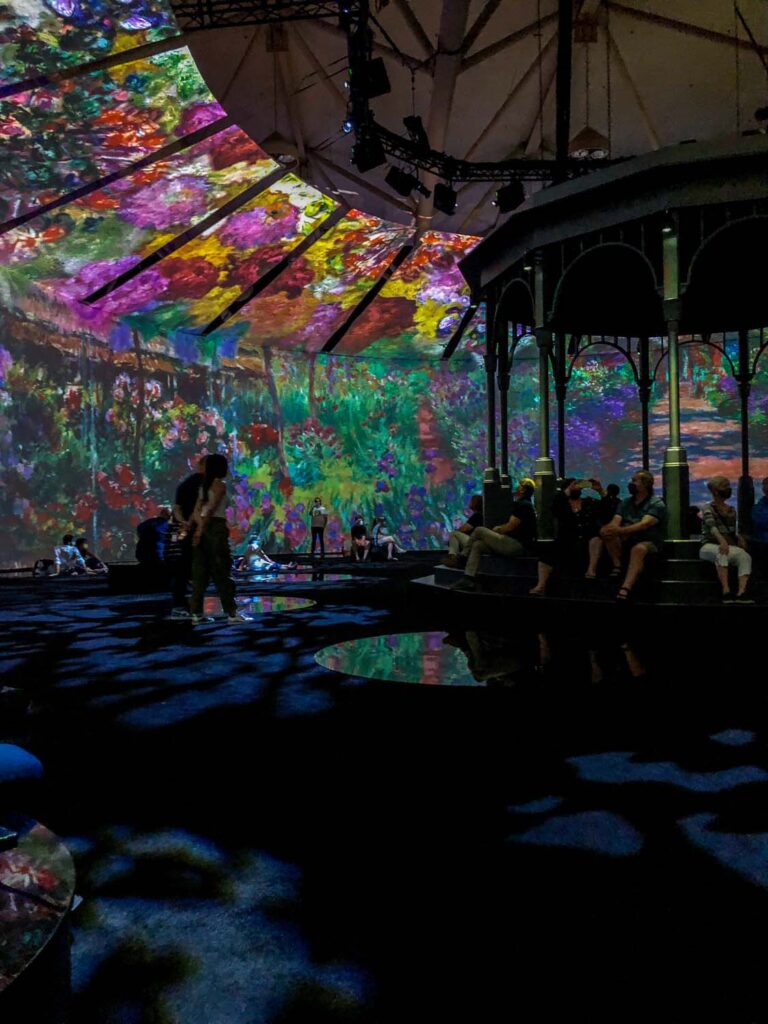
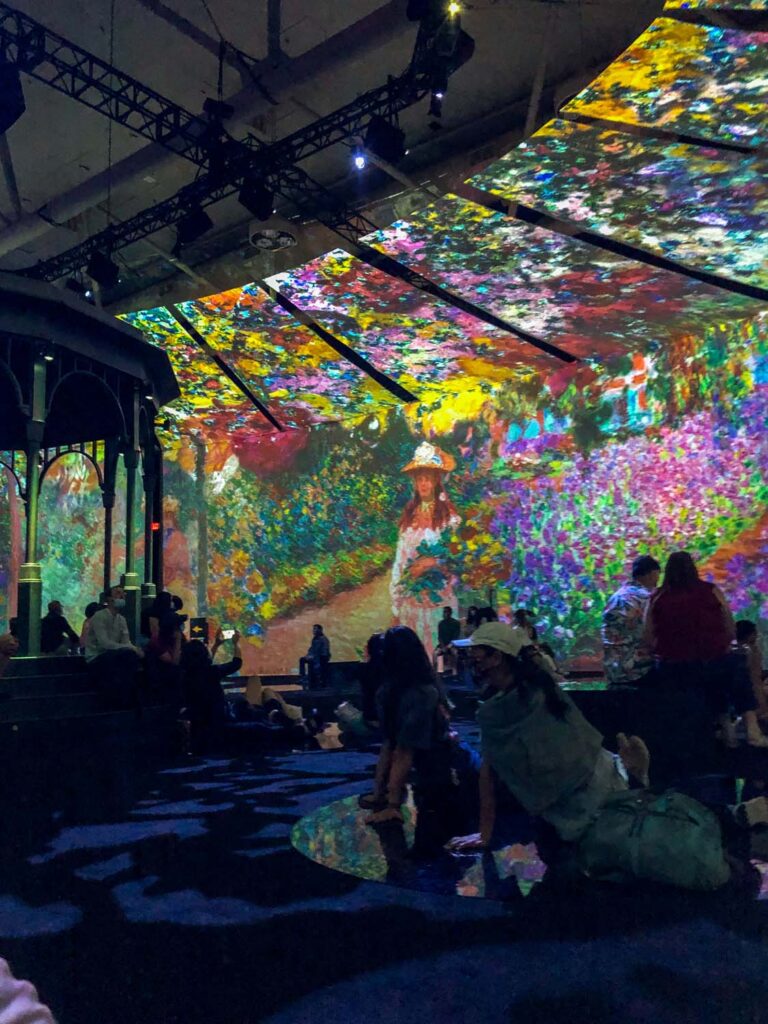
About Beyond Monet
Beyond Monet aims to bring guests into Monet’s artworks. It turns you from a spectator into a character within the frame, inside his ethereal world of impressionism. The pictures are brought to life as the paint moves, swirl, and transforms itself around the circular room. The main space where you view the show is located inside a curved room. The design of this room was inspired by the Orangerie Museum in France, where Monet’s large-scale Water Lilies series is on display. His water lilies paintings wrap around the room in that museum, and here they wanted to recreate that effect but with more of Monet’s collections of paintings.
While many people know Monet only by his iconic Water Lillies, what the production really does well is introducing you to a myriad of his other works, central to his oeuvre. The show’s main theme focuses on the controversy that Monet faced when he began his impressionist movement. And Monet was indeed a revolutionary of the art world during his time. The show’s culmination project reviews Monet’s artwork on-screen, which were less than favourable when the impressionism movement began.
But in reality, Monet was a thriving artist in his own lifetime, unlike some other artists who only found success after their death. Monet did suffer greatly in many ways, but he also flourished. Just like the flowers that bloomed in his garden. While they may fade and die in the winter, they come back in the Spring and Summer brighter and more vibrant than ever! In Monet’s full bloom, at the very end of his life, he created the most iconic series of paintings of the 20th century. His iconic waterlilies mural, a dedication to the lost soldiers of WWI.
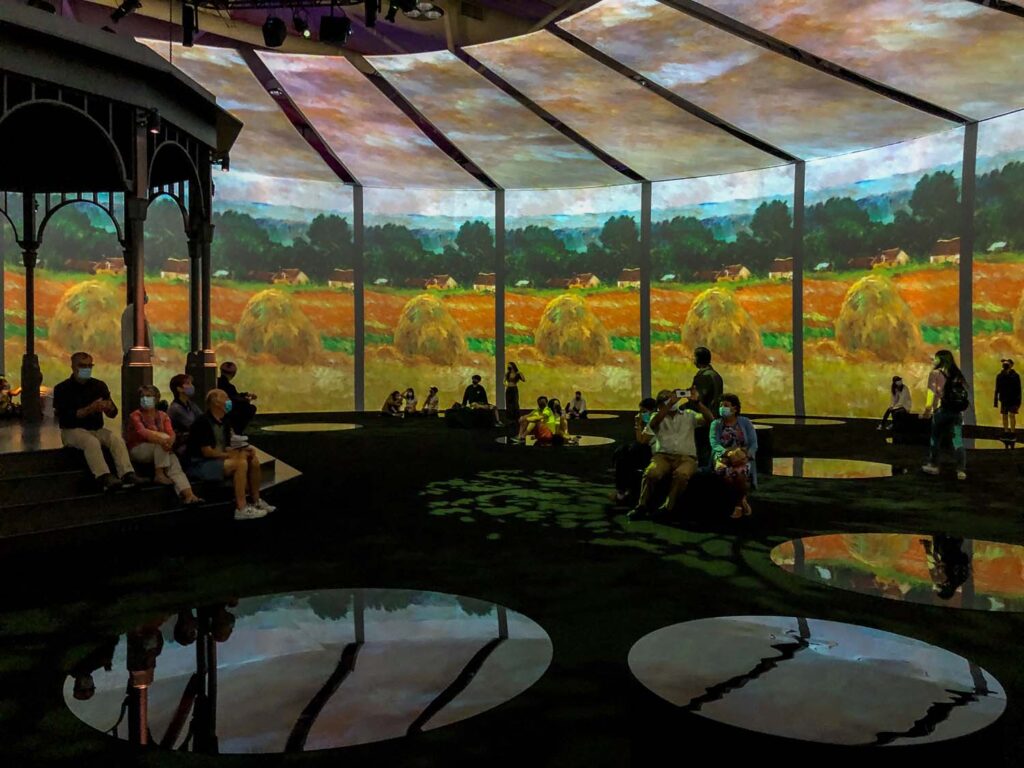
Access & Admission
Beyond Monet is located at the Toronto Metro Convention Center. The Convention Center is located right beside Union Subway Station and Union Go Station. This makes it extremely accessible by public transit from anywhere else in the city. There are multiple parking lots around the area, ranging in price from $10 to $27/hour. Still, with public transit so easily and cheaply accessible, that is my recommendation. The show is entirely wheelchairs, walkers, and scooter accessible.
The show runs until November 14th, 2021 | Sunday – Thursday: 10am – 10pm | Friday – Saturday: 10am – 11pm
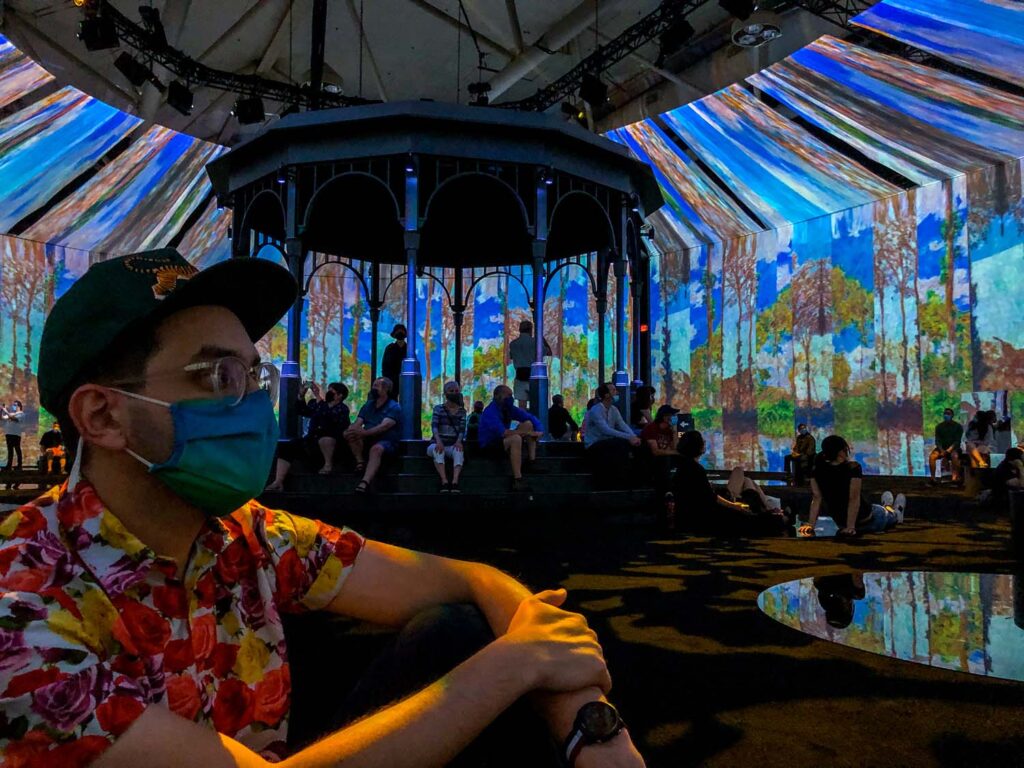
Tickets
There are two tiers of ticketing options. The first is the cheaper option which is offered during off-peak hours (Monday – Thursday). An Adult Timed Entry ticket is $39.99, Children are $29.99, and Students/Seniors are $35.99. During peak hours (Friday – Sunday and holidays), tickets for Adults are $49.99, Children are $29.99, and Students/Seniors are $45.99. Your ticket also is subject to ticketing fees bringing the cost for two people over $100. Because the visit is about one hour in length, this is a pretty costly outing.
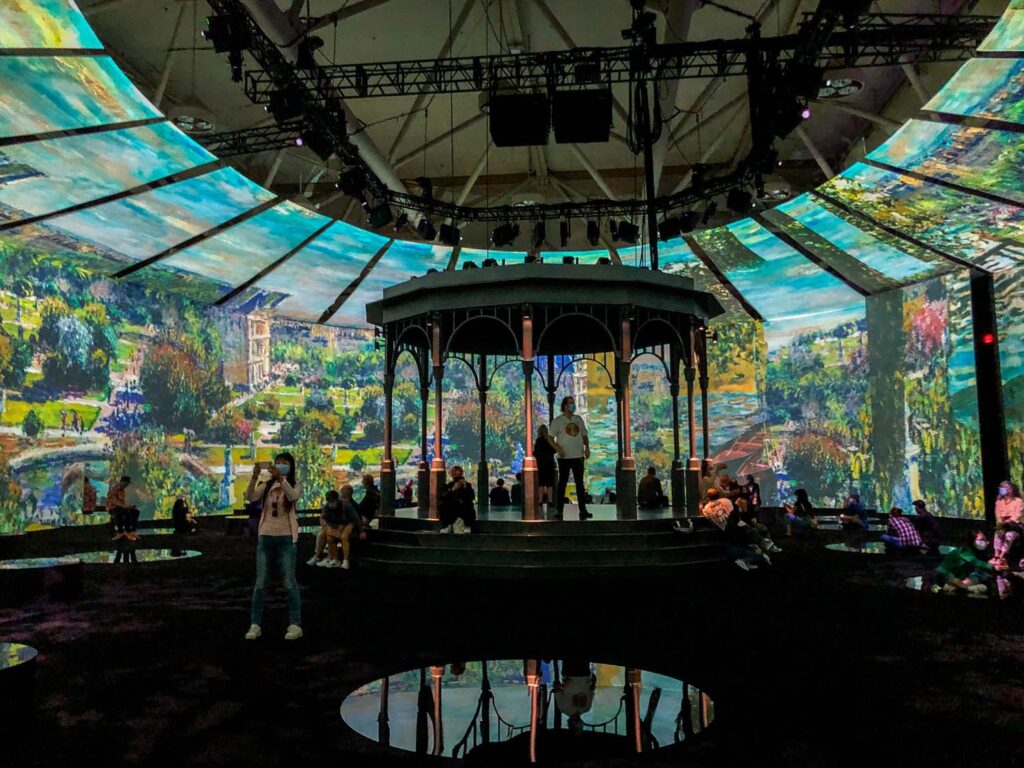
I’ve commented on this before, but I’ll say it again. I really think that the producers of this show need to consider the pricing of these productions. I think the show is fantastic, but not for the cost they are currently offering. A ticket to the ROM is $23, and the AGO is $25, and this institution can provide an entire day’s worth of entertainment. Compare that to a single hour for almost double the price of the Beyond Monet production. For people for whom money is no object, this obviously isn’t an issue. Still, the show is definitely something I wish would be more accessible to a wider audience. I think a pay-what-you-can day would be a great idea to open the show up to more people.
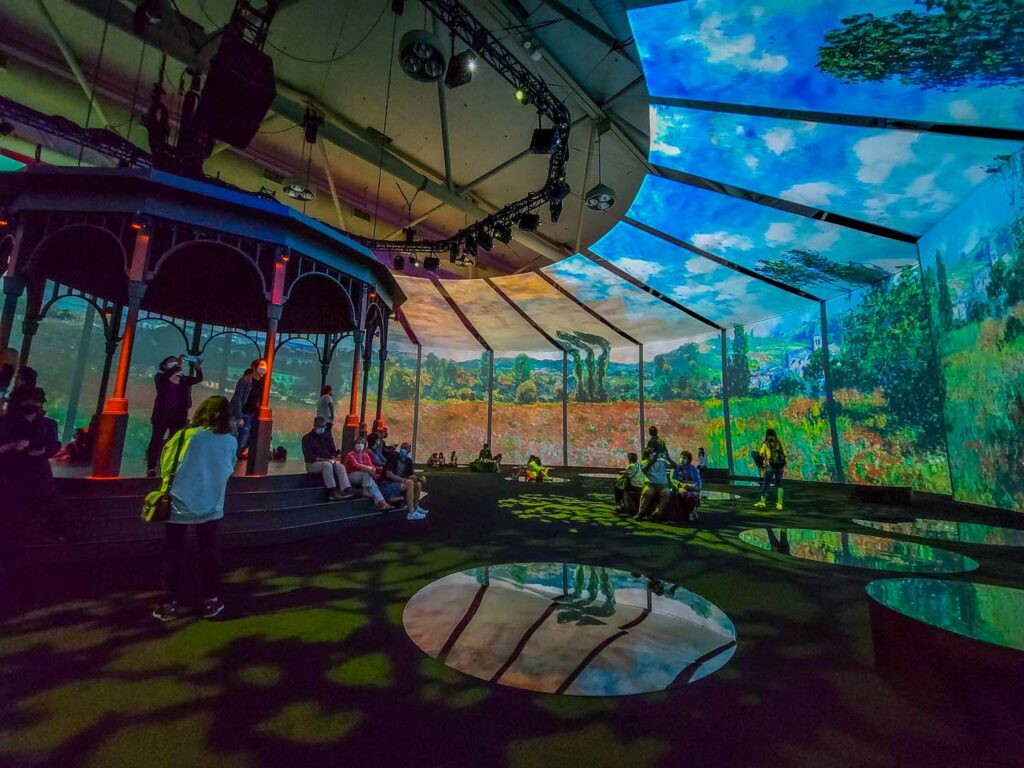
My Honest Review of Beyond Monet
Bridge over a Pond of Water Lilies
The introductory room to Beyond Monet features two arched bridges inspired by the famous ‘Bridge over a Pond of Water Lilies‘ painting. Hanging from the ceilings around the room are large explanatory panels. This room doesn’t have any real directional flow, so it’s difficult to know where to start or follow the story they are trying to tell. I know many people find it so difficult to read informative panels in any context. But it felt even more difficult here. It’s so important to read these to get a better idea of the story they are trying to tell. This room features the sound of birds chirping, water rushing and the wind blowing through the trees. This is actually one of the most immersive parts of the exhibit, as it sounds like what Monet would have heard while painting in the garden. I just wish the text had been a bit more consumable, concise and streamlined.
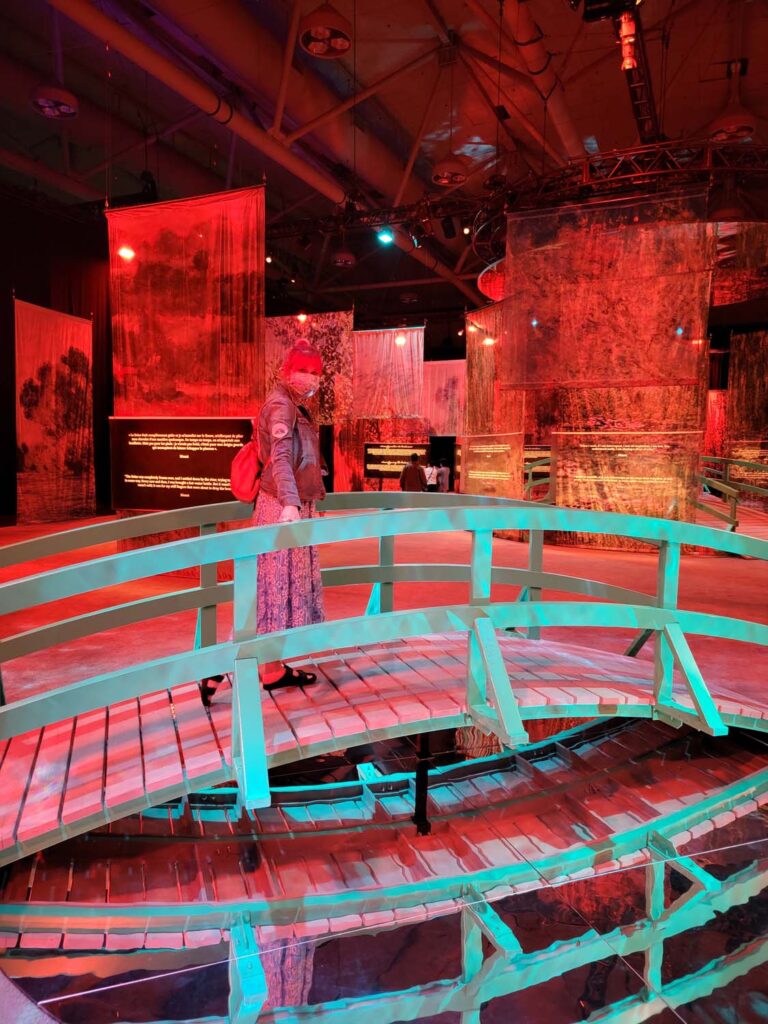
The context will help the viewer understand the art more deeply. It makes the show more than just looking at pretty pictures, but understanding who Monet was, his philosophy, why he changed the world of painting and how he saw the world around him. I just wish there had been a way to weave this into the show a bit better, so you didn’t have to rely on people reading every panel to absorb this information. Because let’s face it…they don’t.
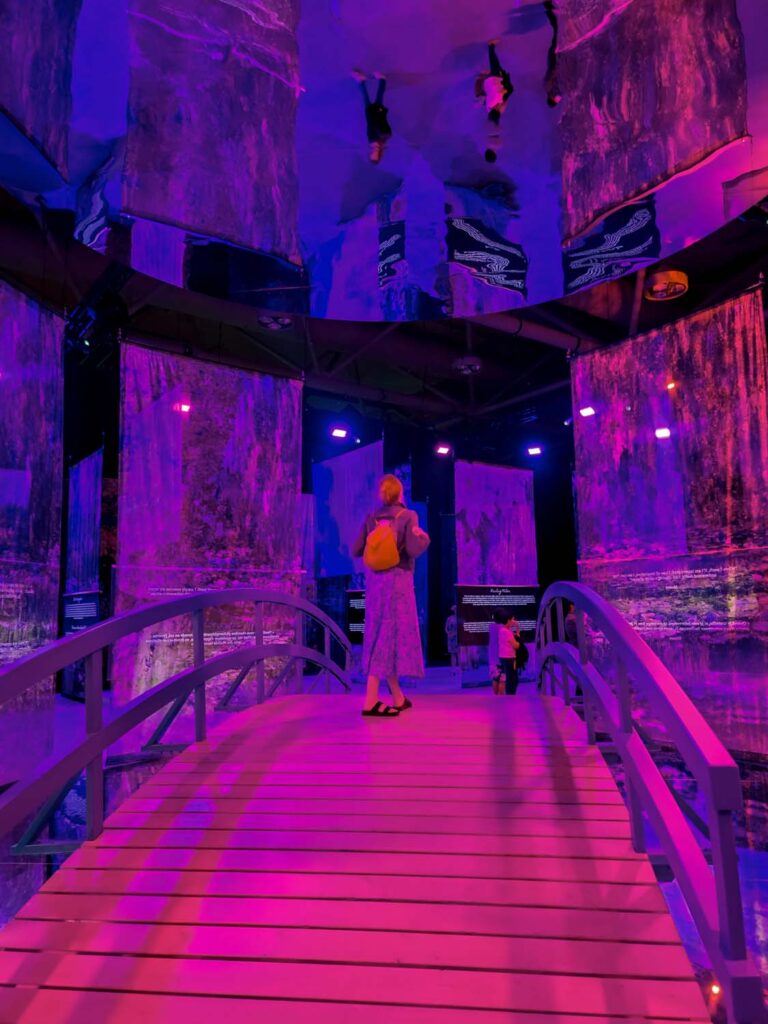
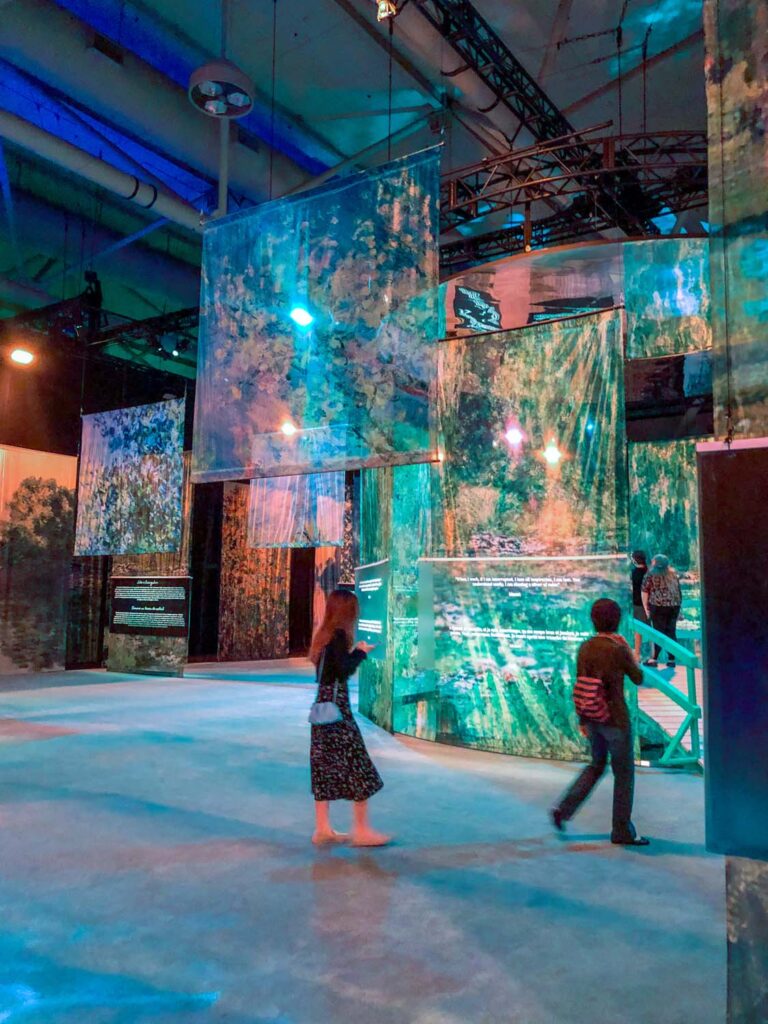
Infinity Room
From the first room, you are lead through a tunnel of streamers into the ‘Infinity Room.’ This room features a large pavilion in the center surrounded by reflective panels on the floor for guests to sit on. The reflective panels are one of the best parts of the room as they act as mirrors and reflect the artwork onto more parts of the room, like drops of rain speckled on the floor. The gazebo surrounded by Monet’s naturalistic images felt wonderfully fitting. Sitting under the awning looking out at the gardens was one of the most entrancing parts of the show.
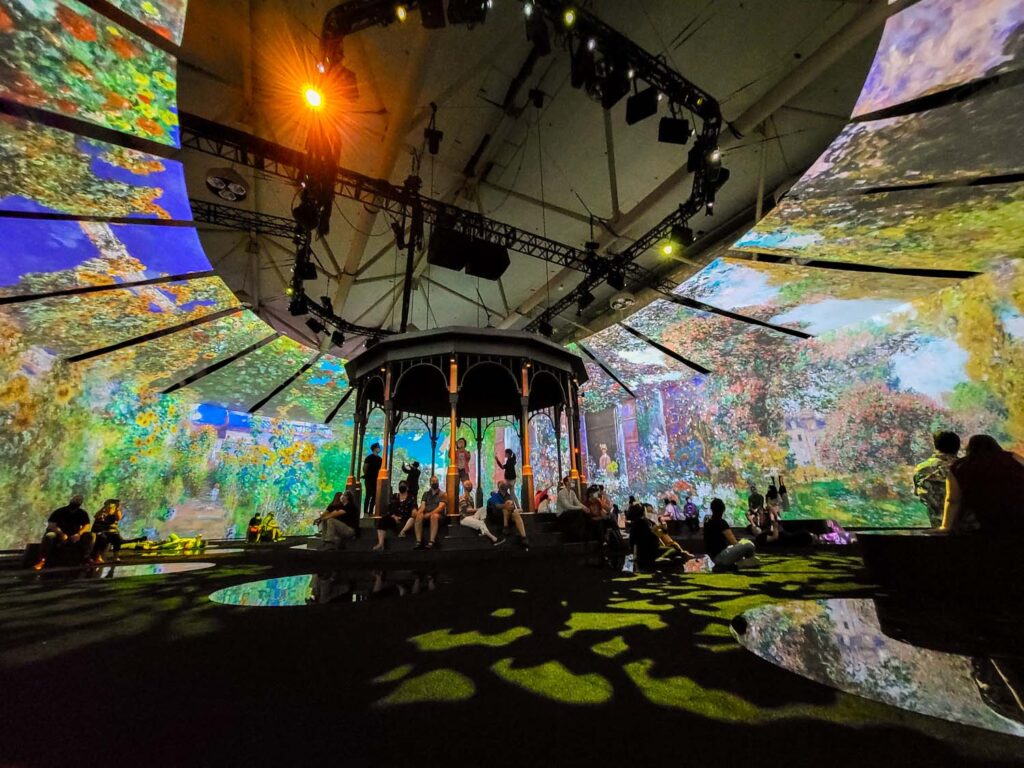
Immersive Intervention
The production tries to wrap the images around the gazebo roof, but adding projections onto the ceiling means the entire room is more illuminated. You can therefore make out the metal of the lighting rig and other elements which take you out of the immersive experience. It very much feels like you are standing in a convention center. This was perhaps the biggest failing, as it really took you out of the imaginative space. The Van Gogh exhibition had images covering the floor and crawling up the twisting walls. It seems to transform the space differently. I also felt like the score of this production was a bit weak. Van Gogh featured a nice combination of traditional and modern music with great swells and pacing. This score felt a bit lacklustre. As Monet himself was this huge revolutionary, I had hoped the music could have reflected this sense of rebellion. And for the price of the tickets, you’d think they could get some good music rights.
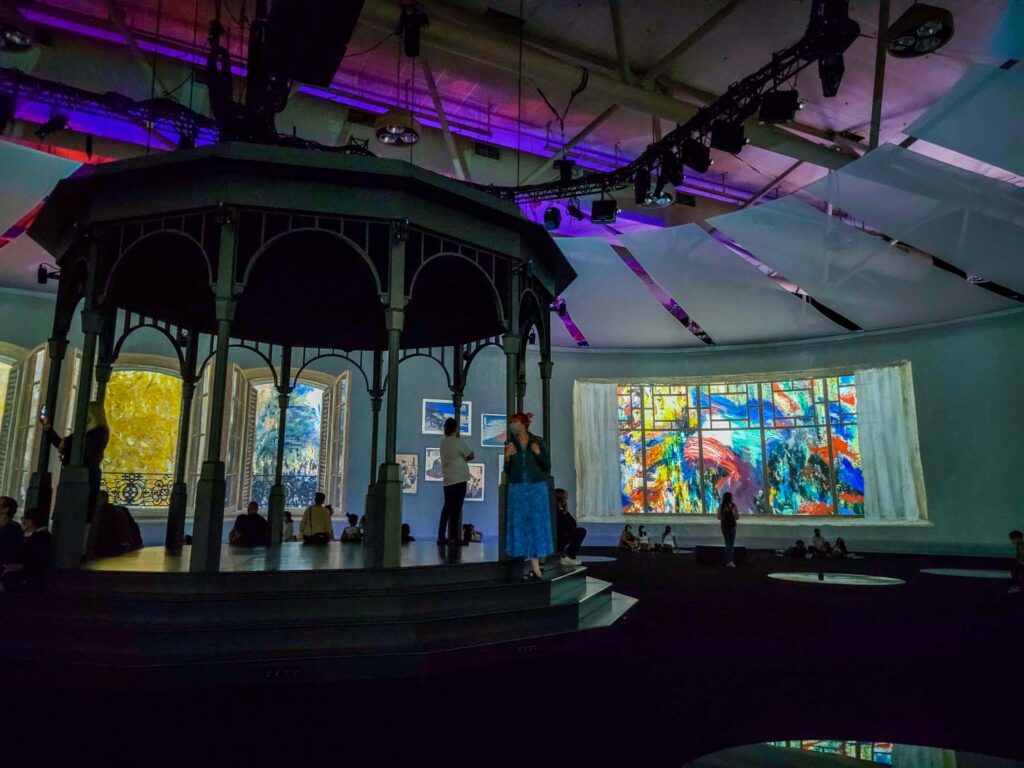
The Collection
What Beyond Monet really does well provides the viewer with such a rich deep dive into Monet’s collection of artworks. Nowhere in the world could you ever have so many different works of Monet together at once. It would simply be too expensive to put on for any museum. The designers of the show do an amazing job of curating various paintings together. They do not appear chronologically but weave together thematically to tell a story all about how Monet saw light and colour. And his emerging dynamic style.
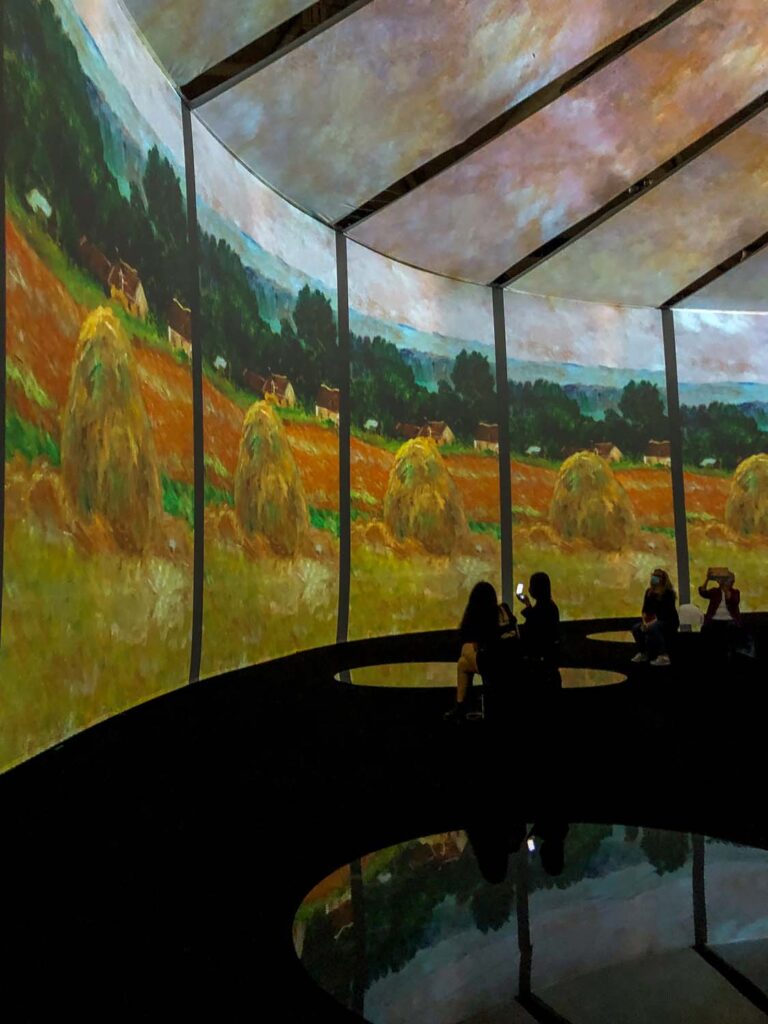
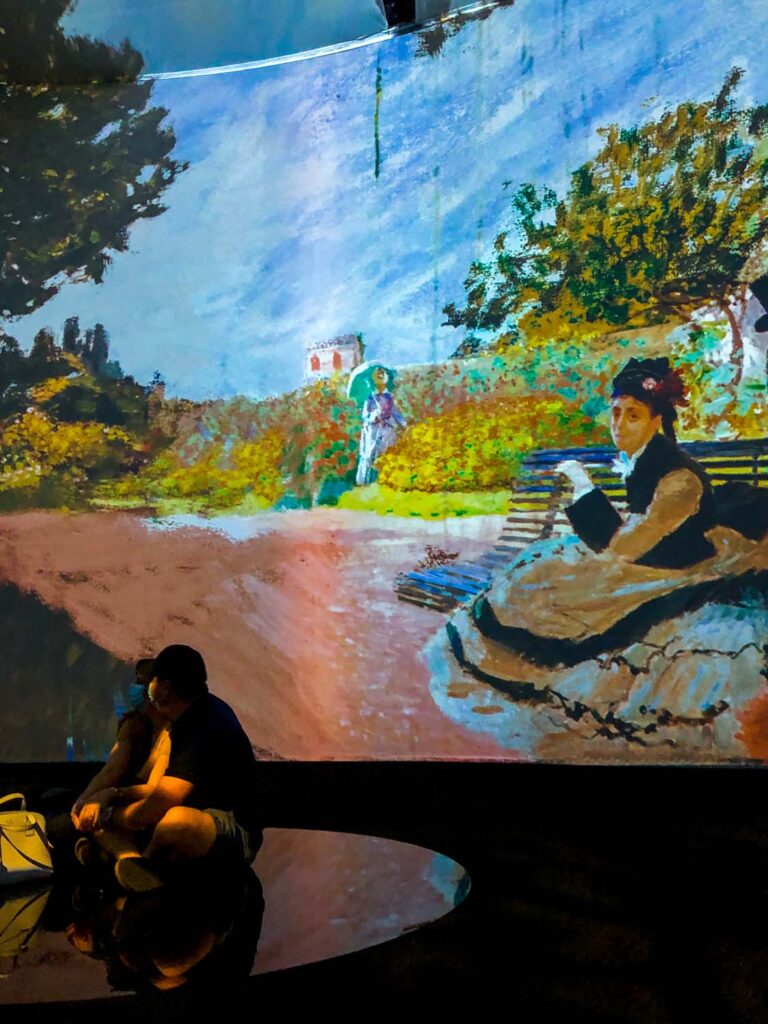
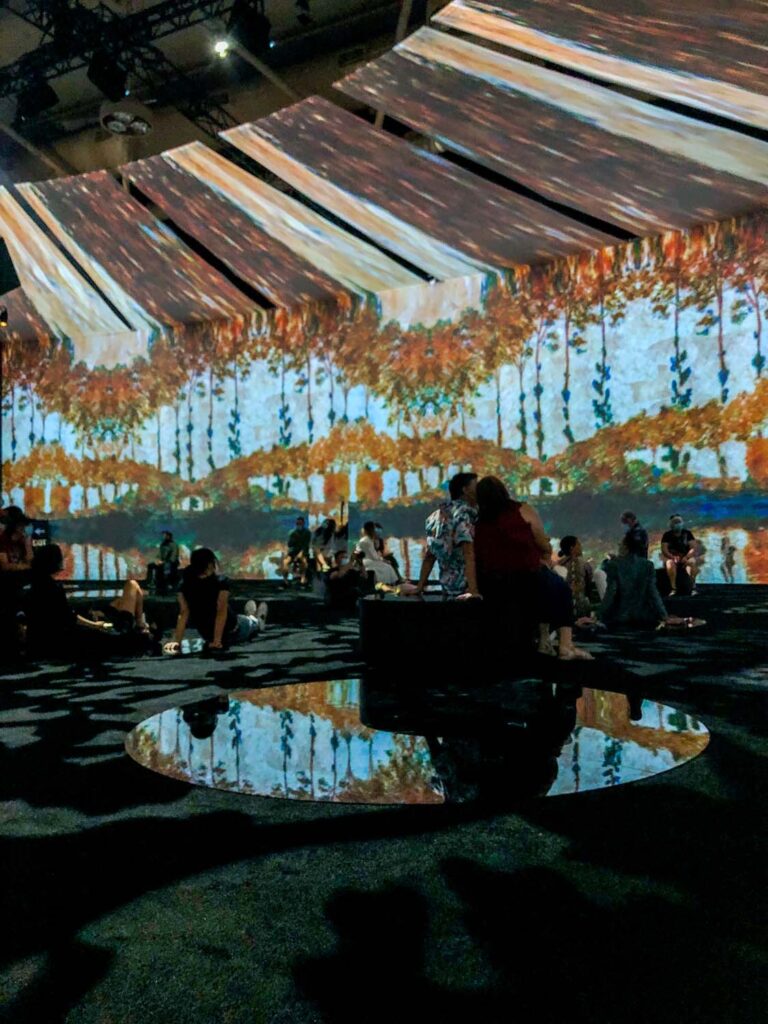
Overall Review
Overall ‘Beyond Monet’ felt a bit rushed. On the heels of the success of ‘Beyond Van Gogh,’ it felt like they really wanted to latch onto the next big thing and ran with the idea. The animations given to the artworks felt a bit unexceptional and simplistic. The train moves on the tracks, the boats bob up and down on the waves and the tree blow in the wind. Pretty typical. While Monet was a revolutionary, the show’s animation definitely felt like it could have pushed the boundaries a bit more. And perhaps with a bit more time, there could have been a bit more dynamism added to the experience.
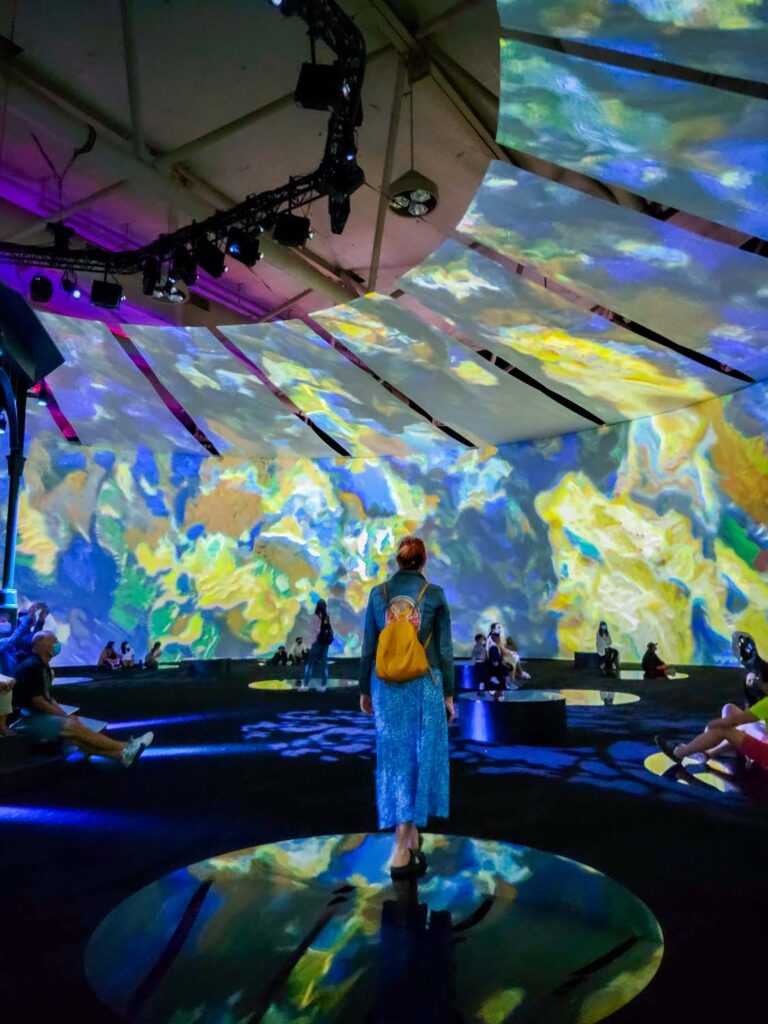

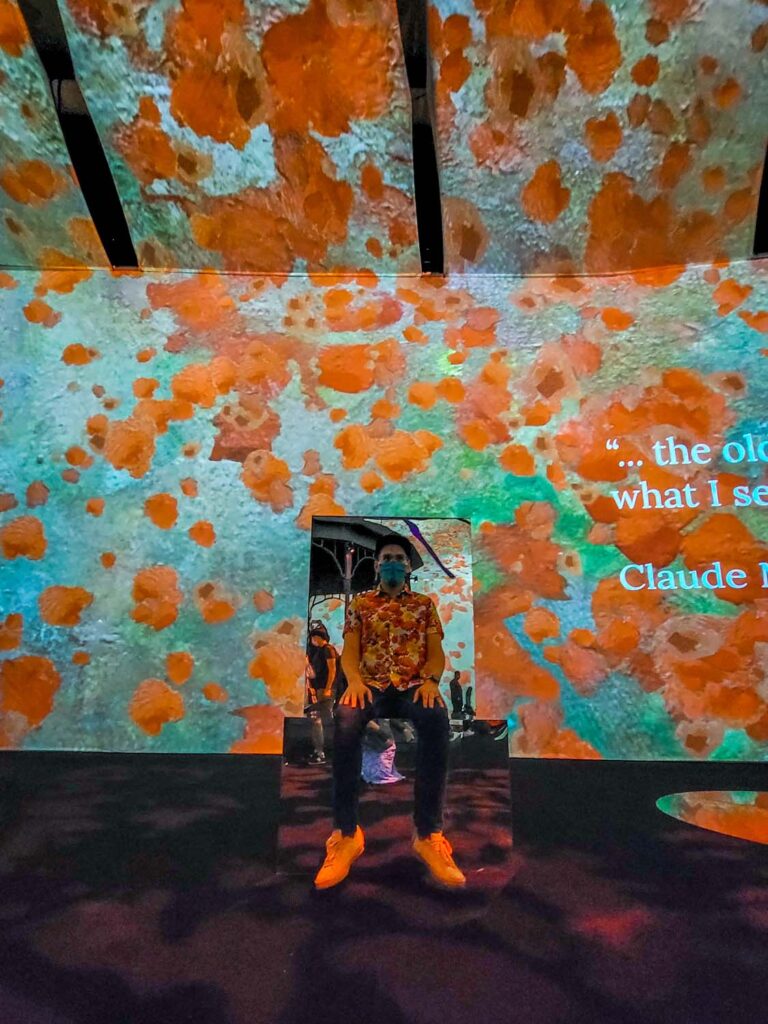
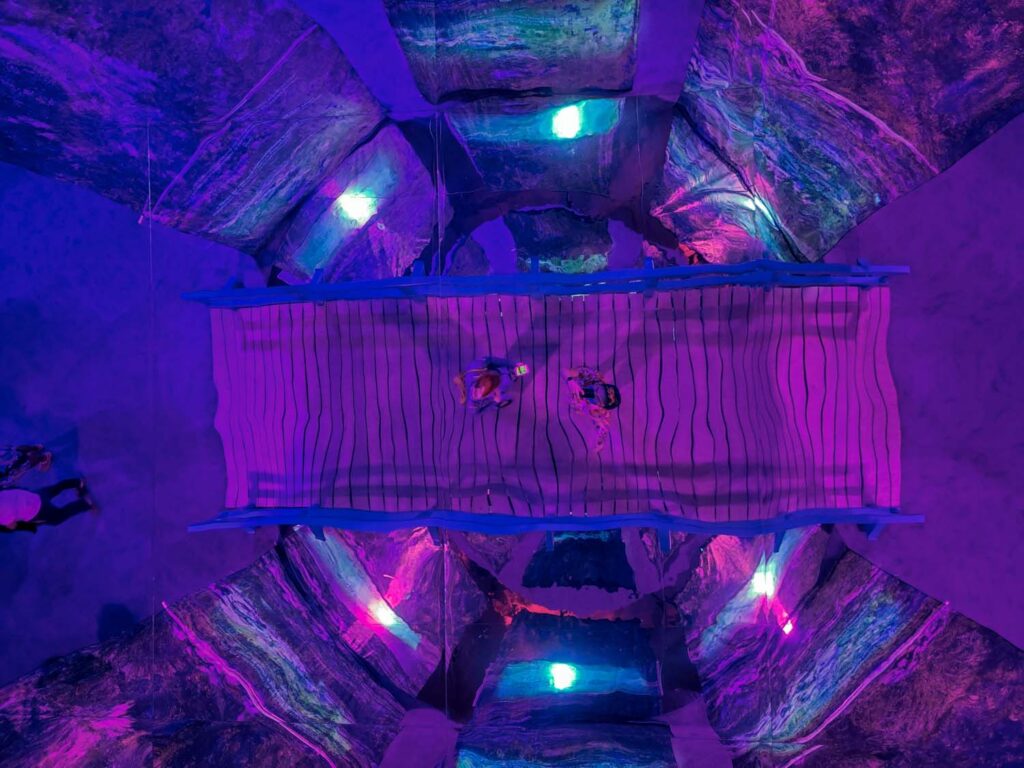
About Claude Monet
Monet’s Young Life
As is the tale with many famous artists, Monet’s life is marred with death. He was born in 1840 in the heart of Paris. Although the family moved to Normandy in 1845, Paris’s artful heart was etched forever into Monet’s mind. From even an early age, Monet dreamed of being a painter. His father was a merchant and wanted to push Monet into going into the family grocery business. It was Monet’s mother who supported his career as an artist, as she was a singer. Monet’s loving mother died in 1857 when Monet was just 16 years old.
Monet’s father had no way of caring for the children on his own. So Monet’s father sent the children to live with his widowed but wealthy aunt, Marie-Jeanne Lecadre. Although suffering from the loss of his mother, his living situation with Lecadre was fortuitous as she was one of the greatest supporters of Monet throughout his career.

Monet in Paris
When Monet moved to Paris to study in the Académie Suisse. Back then, the most popular style of art was neoclassical paintings. These featured the myths and legends of Greek and Roman gods. If ever artists painted the world around them, it was solemn peasants toiling in the fields. And yet Monet saw a completely different world. Not of the past but over the ever-changing present. His world was modern, full of inventions and vibrant social life. Monet met his lover Camille in 1859 when in Paris. She became his primary model and painted her obsessively throughout this period of infatuation.
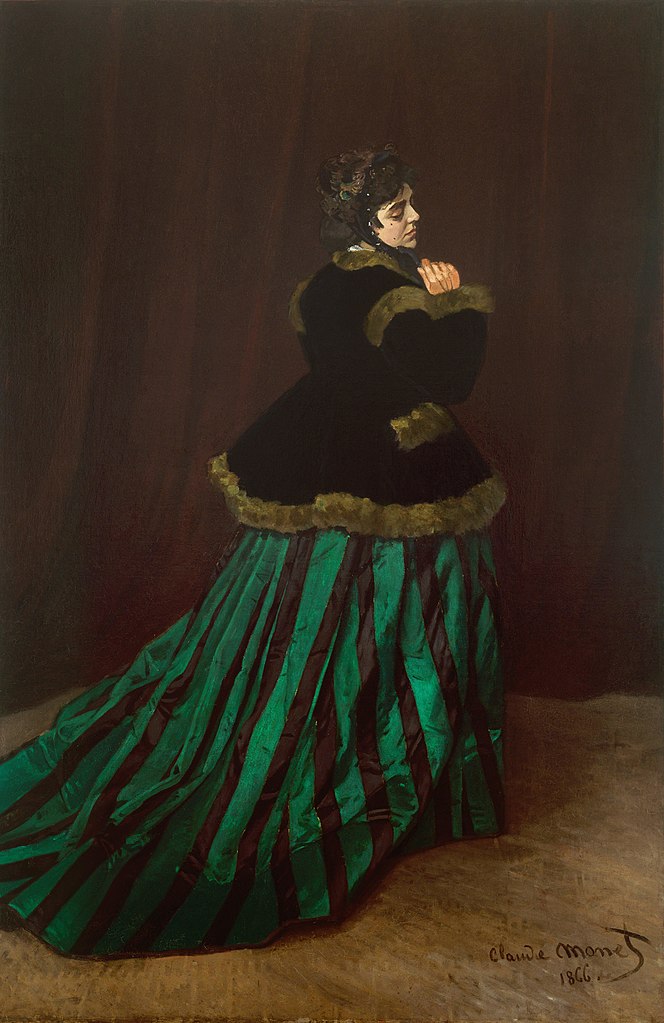
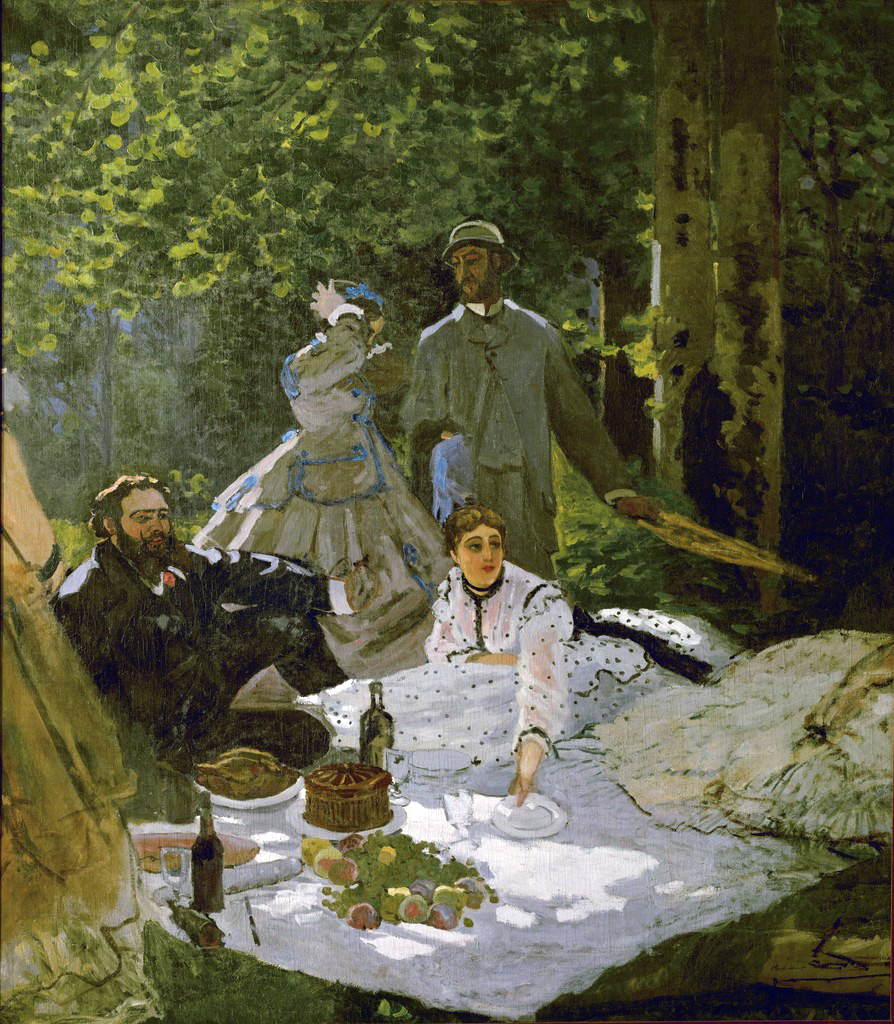
En Plein-Air
While in Paris, Monet also met Renoir, who shared his passion for discovering a new painting style. Together they formed a group of like-minded individuals. This included Monet, Renoir, Pissarro, Sisley, Paul Cézanne, Edgar Degas, and Berthe Morisot! A true gauntlet of artists. One of the things these artists all had in common was how they painted. They developed stylistic experimentation called “en Plein-air” or “outside painting.” They abandoned the idea of a stuffy studio and instead brought their canvases outside. This meant smaller canvases and a quicker method of painting that captured a singular moment in time. Monet painted garden scene after garden scene. Women walking through flower encrusted fields or lounging beneath the trees filled his canvases.
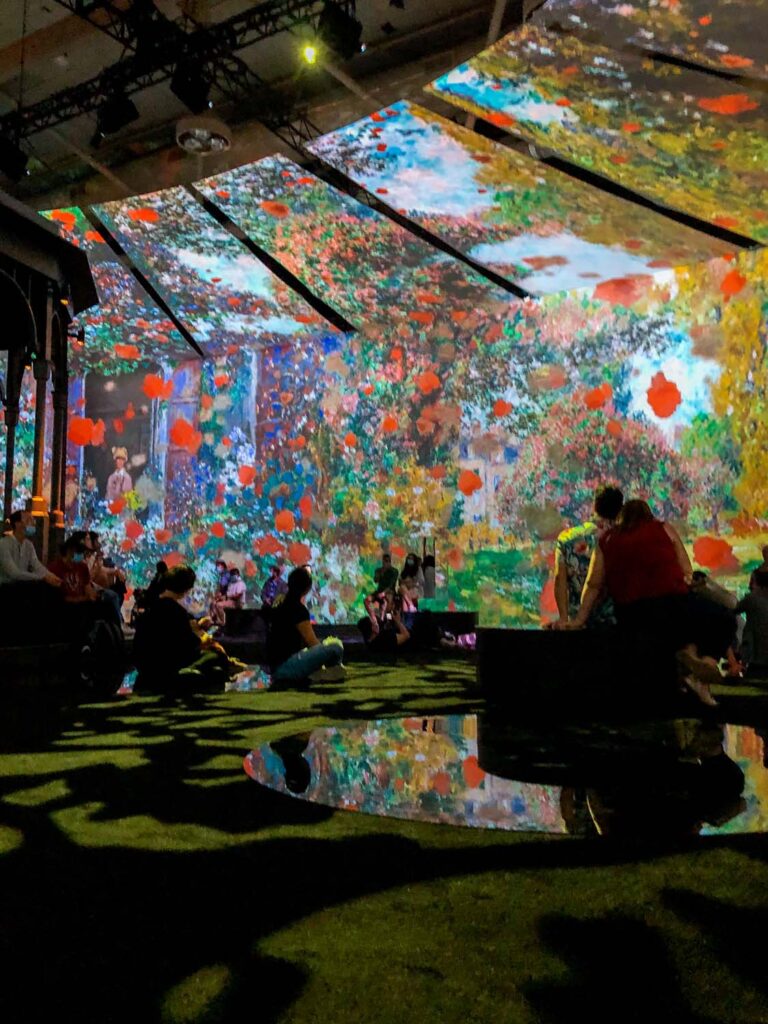
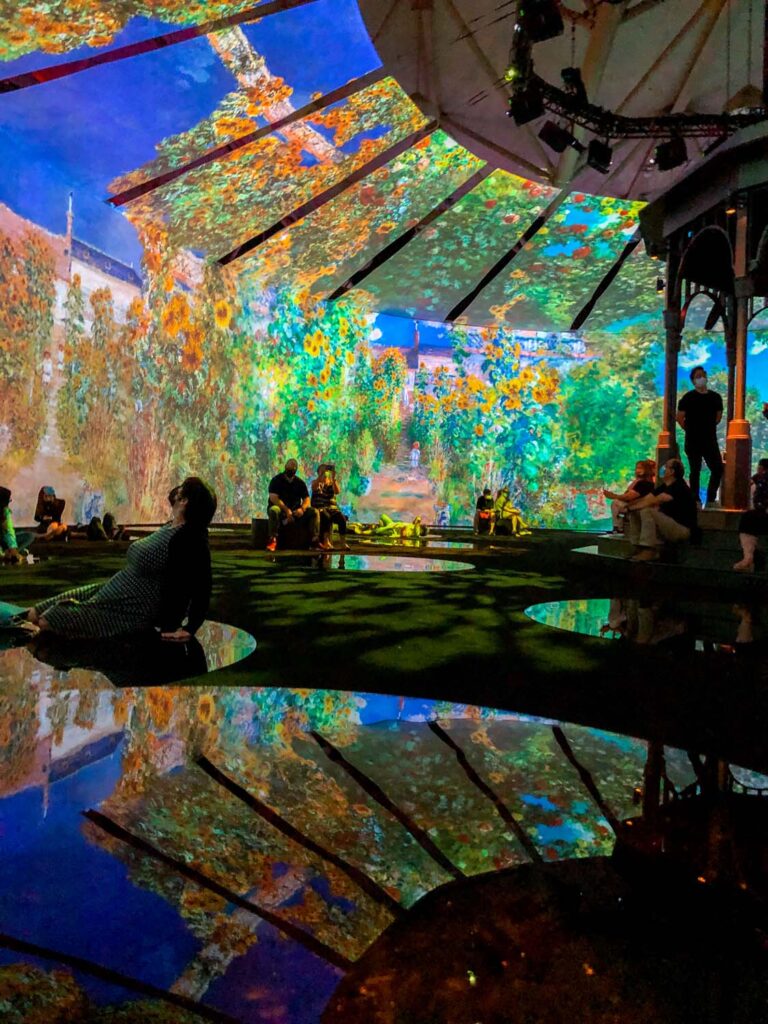
I perhaps owe having become a painter to flowers.
Claude Monet
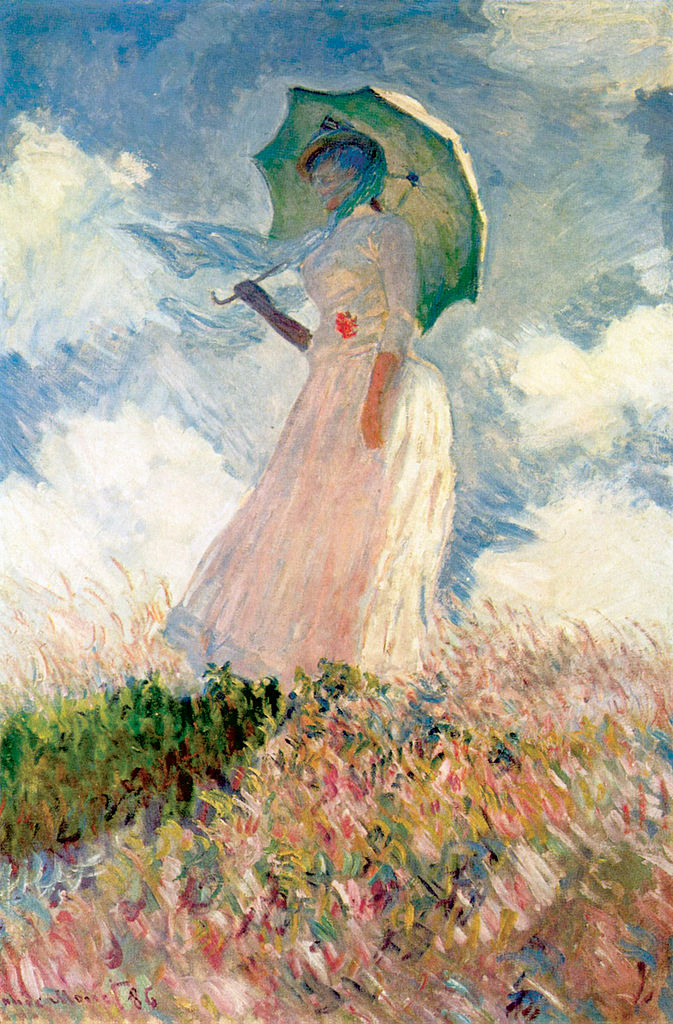
Monet’s Storm
In 1867, Monet and his then-mistress, Camille Doncieux, gave birth to their first child, Jean. Monet’s father was horrified at this birht out of wedlock and immediately cut off any financial support to Monet. The two eventually married in 1870, shortly before the outbreak of the Franco-Prussian war. Wanting to avoid conscription, Monet fled to London and the Netherlands and lived with the family where he could. While in London, he stumbled upon paintings on the nautical paintings of J. M. W. Turner through an art dealer friend of his. Monet was enraptured. He was captivated with Turner’s use of light, or sometimes the lack thereof. Turner knew how to paint the fog. His paintings lacked any crispness and yet held a powerful sense of emotion and depth of curiosity within them.
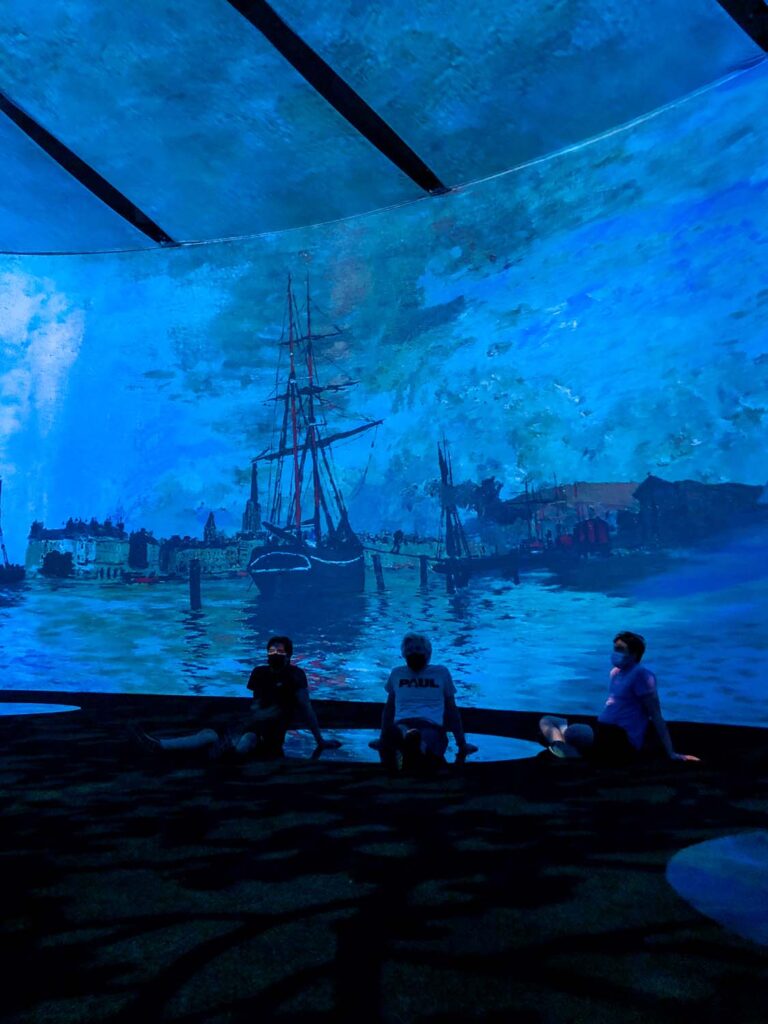
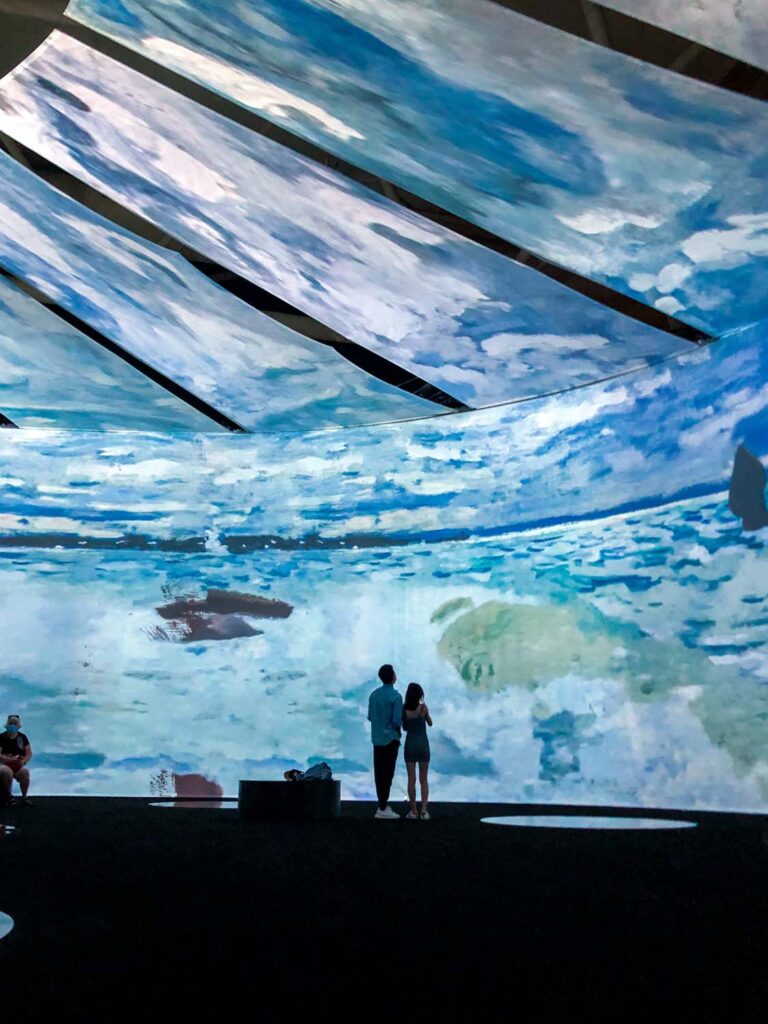
Relfections on the Thames
Monet himself turned to paint his own series on the Thames river during all different times on the day. Monet’s previous seascapes were rendering of the world, but this series was about rendering emotions. “Merit lies in having painted directly in front of nature, seeking to render my impressions of the most fleeting effects.” He became enthralled with light and how light altered the colour of the world around him. How light could change the perceptions of reality. Nature reflected the brooding of his mind. He also found it important to paint the modern landscape, which contained industrial elements like railways and factories, which were the makeup of the modern world.
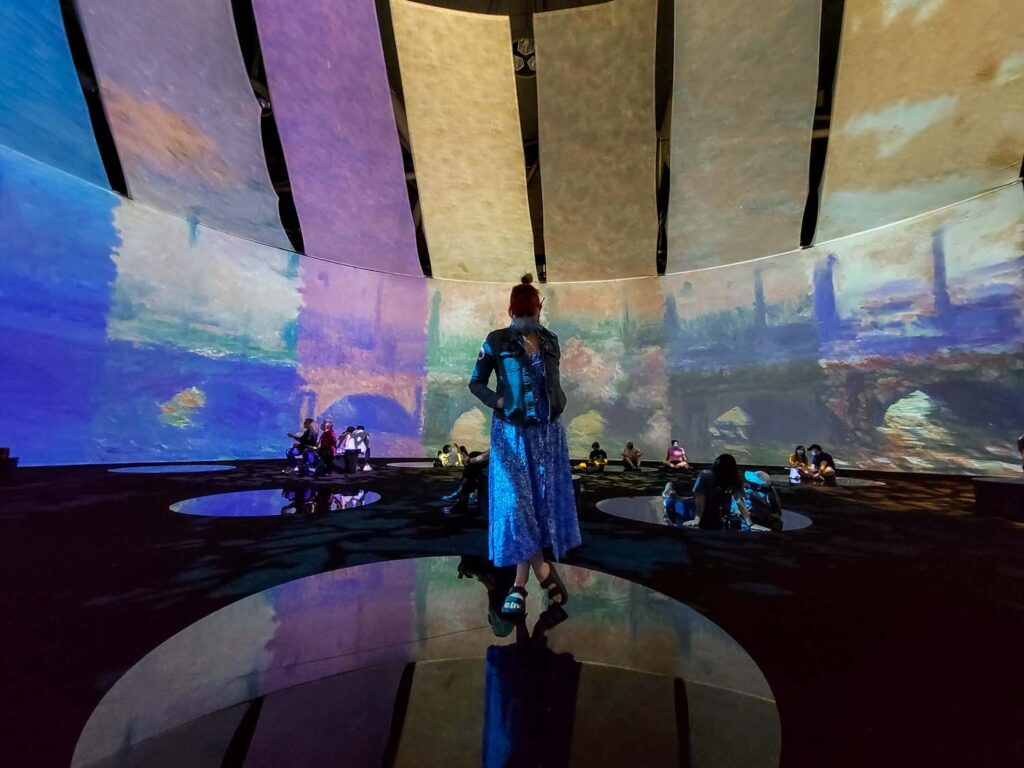
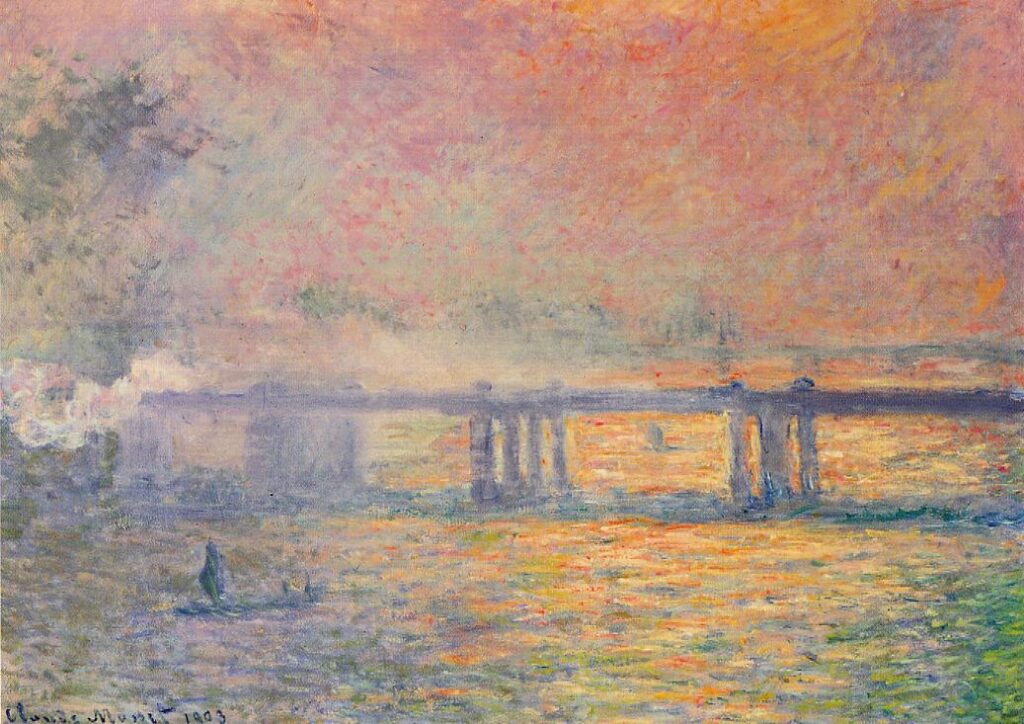
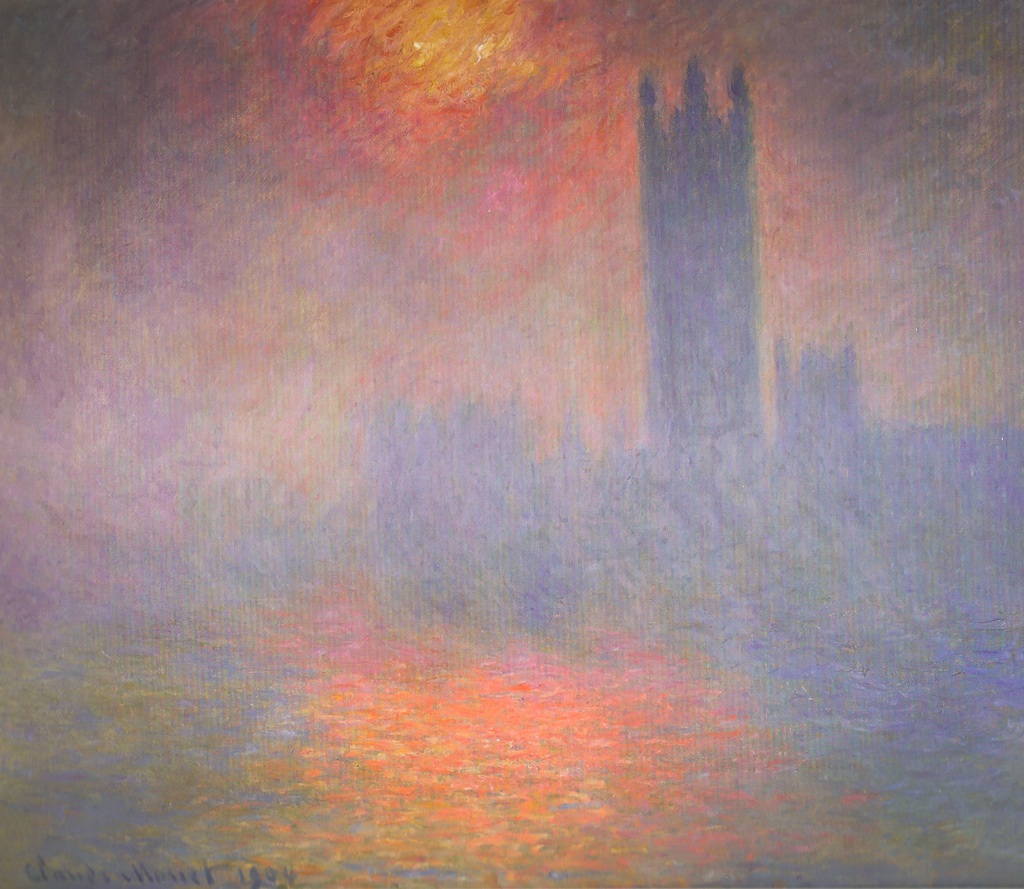
In 1874, he bought a boat to sail on the water to make himself one with the world in which he wanted to immerse himself. Monet’s finances were dire. He couldn’t pay for his family’s housing, and the need to sell more paintings became the primary focus of his life.
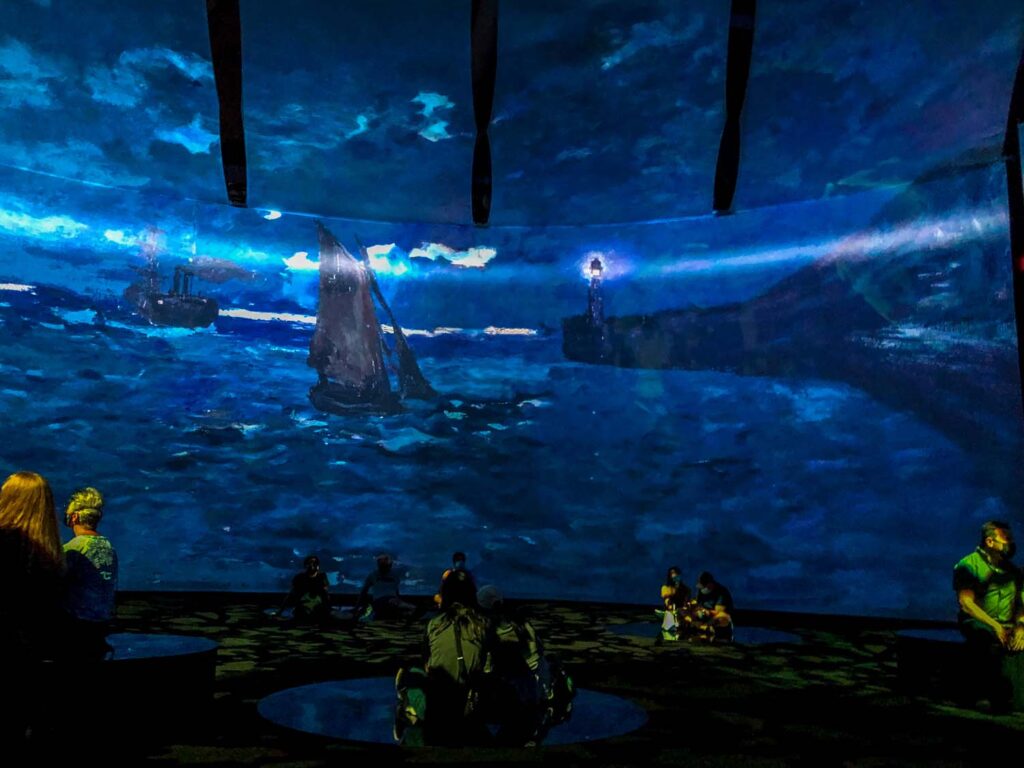
Paris Debut
In 1874, Monet and his other fellow painters made their debut in the Paris Art Salon, hoping to sweep the art world off its feet. Sadly, their style of painting was roundly rejected. The art critic Louis Leroy wrote a hostile review of Monet’s painting titled ‘Impression, Sunrise,’ where the style and term “impressionism” was coined. The show Beyond Monet seems to focus on these negative reviews. But in fact, there were plenty of progressively who praised the painter’s style and called it a “revolution in painting.”
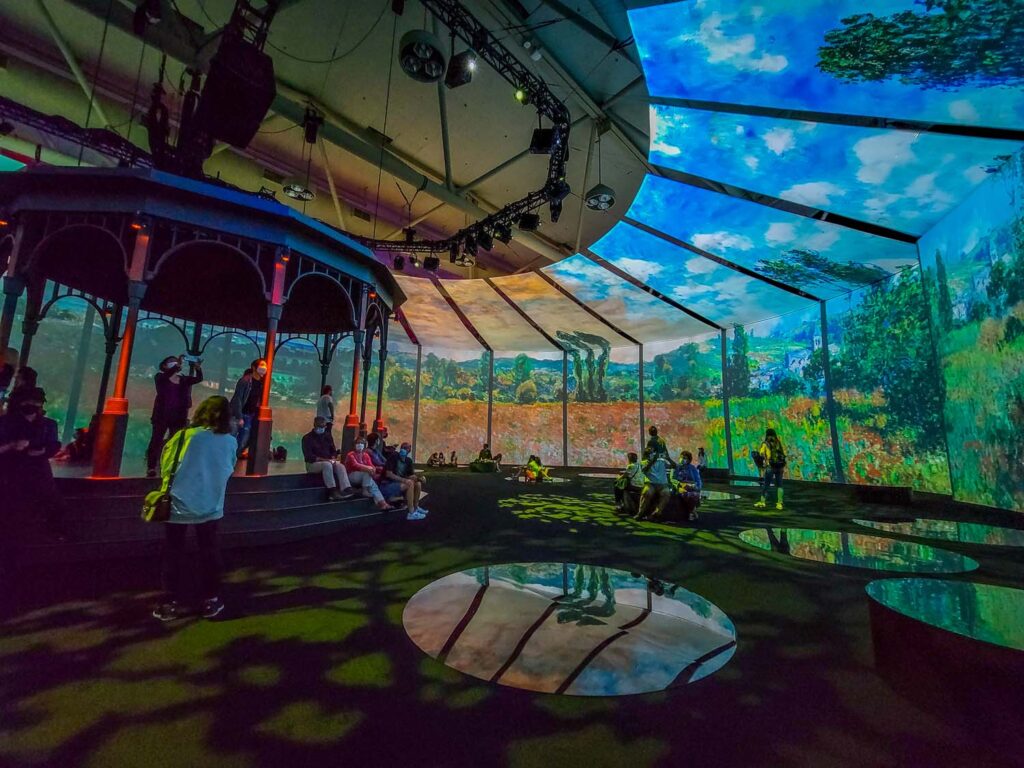
Monet had hoped to sell ‘Impression, Sunrise’ for 1000 francs and was devastated to find it didn’t sell at all. But only a few years later, in 1877, when he displayed his series of paintings of Gare Saint-Lazare train station, did he find himself back in the good graces of the art critics. It seemed it only took a few years for the idea of impressionism to marinate on the cultural palette and for it soon to overwhelm the minds of people and of the critics.
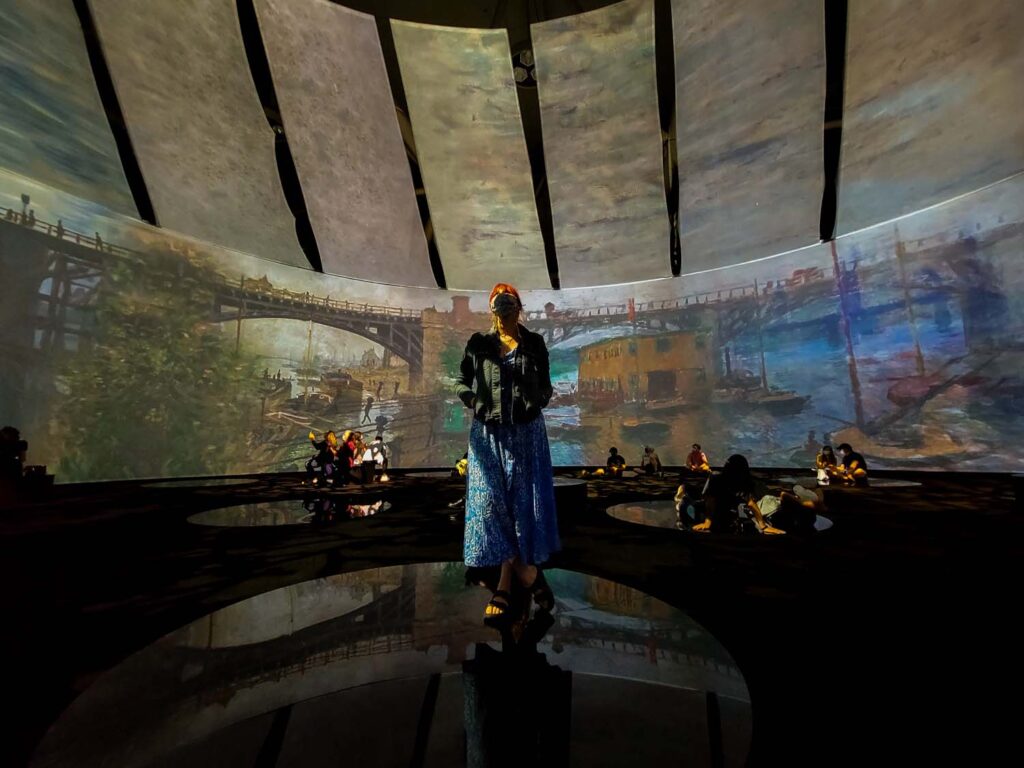
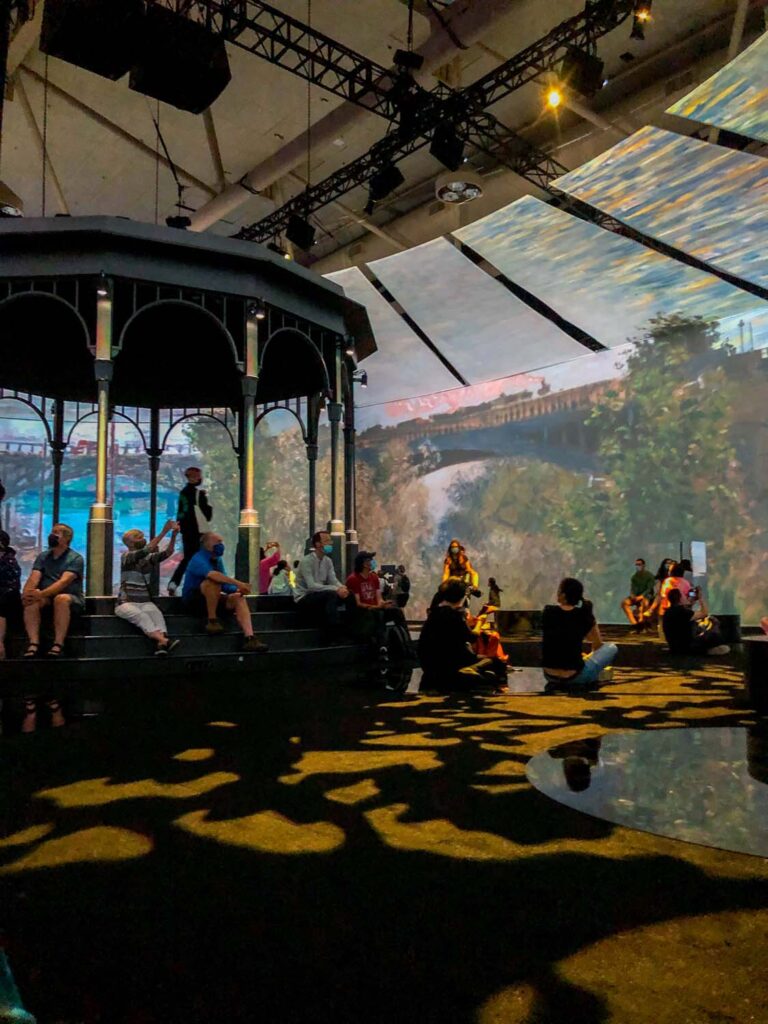
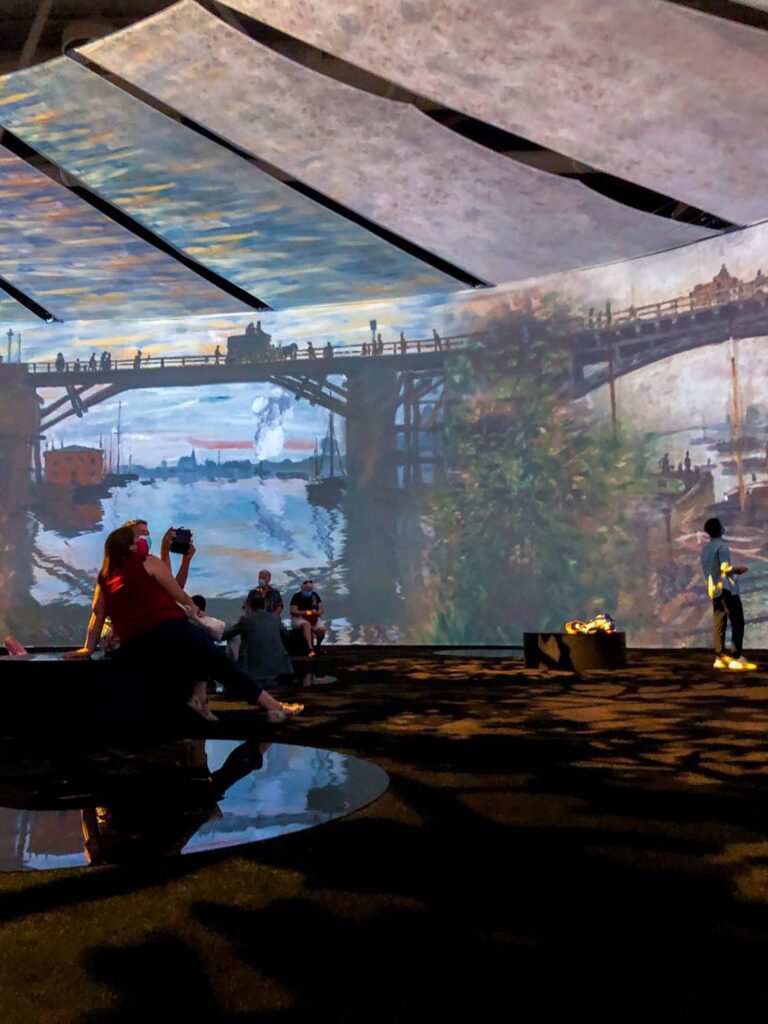
As their success grew, Monet’s impressionists could experiment with their methods more, creating new and even more abstract ways of depicting reality. It’s almost like with success, Monet abandoned those dark and gloomy tones from his earlier periods in favour of a bright, pastel palette that felt airy and optimistic. His brushstrokes became softer, like the delicate caress of a lover. The strokes were smaller as well, and he would apply layer upon layers of these small strokes to form a new kind of optical depth within his paintings. Like looking through a dense tree, the light dappling through the leaves, revealing a secret garden within.

A Blizzard of Loss
Despite increasing commercial success, Monet would suffer another devastating blow when Camillie died in 1878. As she lay dying, Monet didn’t know how to process the grief outside of his paintings. “I one day found myself looking at my beloved wife’s dead face and just systematically noting the colours according to an automatic reflex.” Many art critics view this painting as one of the best death paintings ever created as the colours. The expressive nature of his brushstrokes seems to communicate to the viewer the “blizzard of loss” so intensely felt by all those who have lost a loved one.
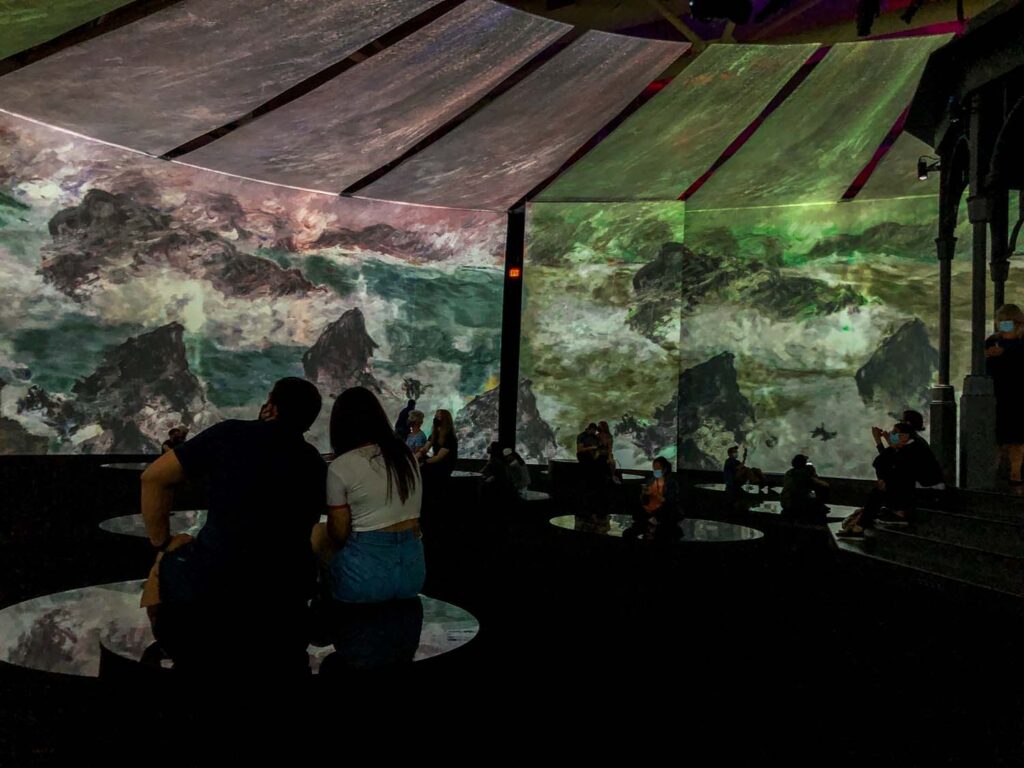
Garden in Giverny
But being a romantic-hearted artist, it didn’t take Monet long to find another object of his affections. He began having an affair with Alice Hoschedé, wife of art collector Ernest Hoschedé. Even though she was still married, the two and their children moved into a house together in Giverny. This house in Giverny where Monet could finally realize his dreams of creating his own “Garden of Eden.” While Monet’s paintings had always focused on nature and gardens, he dreamt of creating one of his own where he could curate the scenes for every season.
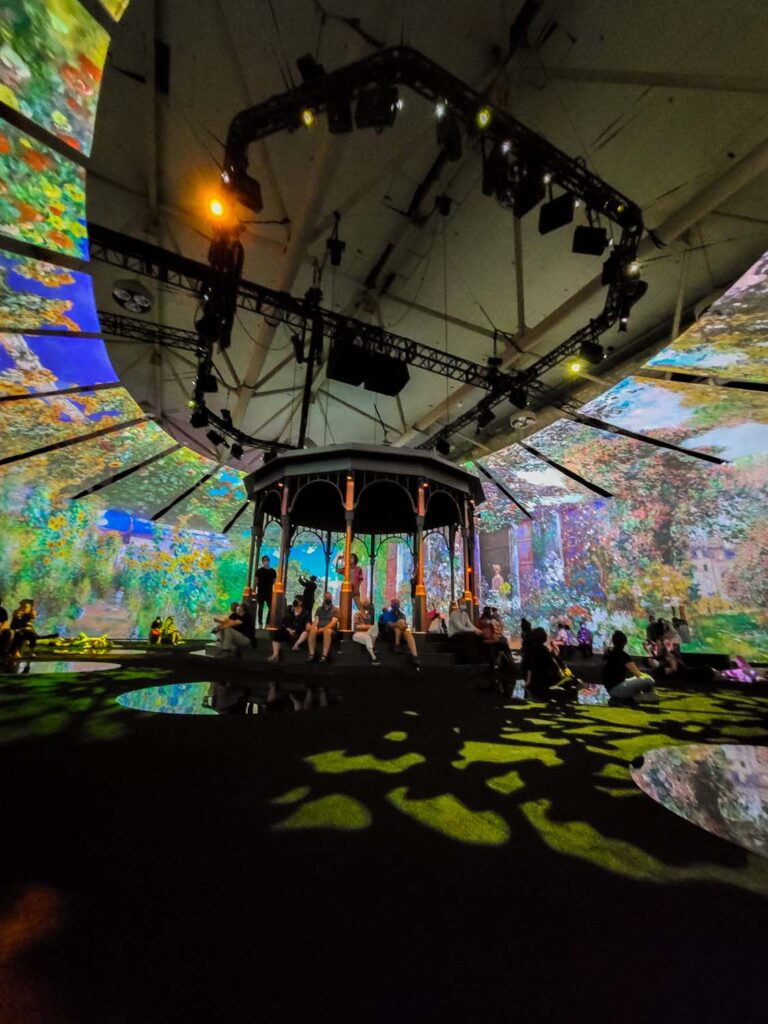
Designing the Garden
Through the sale of some of his paintings in America, Monet’s new wealth meant he could have whatever he wanted. He poured through his collection of botany books and gave precise designs and layouts for plantings to his gardeners. At one time, he had as many as seven gardeners working on the project. He purchased more land around the house to develop his water Lillie pond, importing Lillies from as far afield as South America and Egypt.
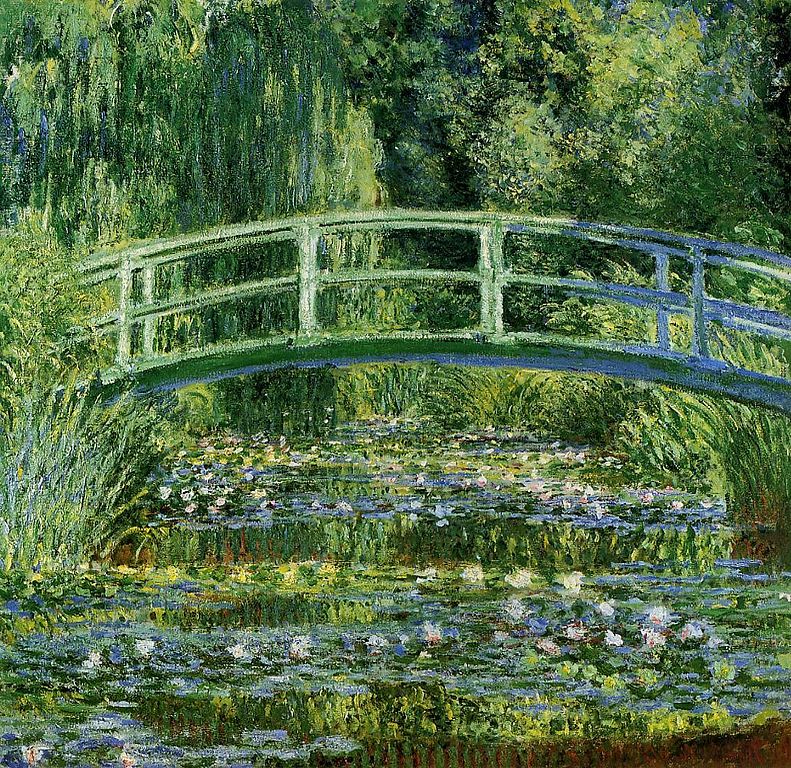
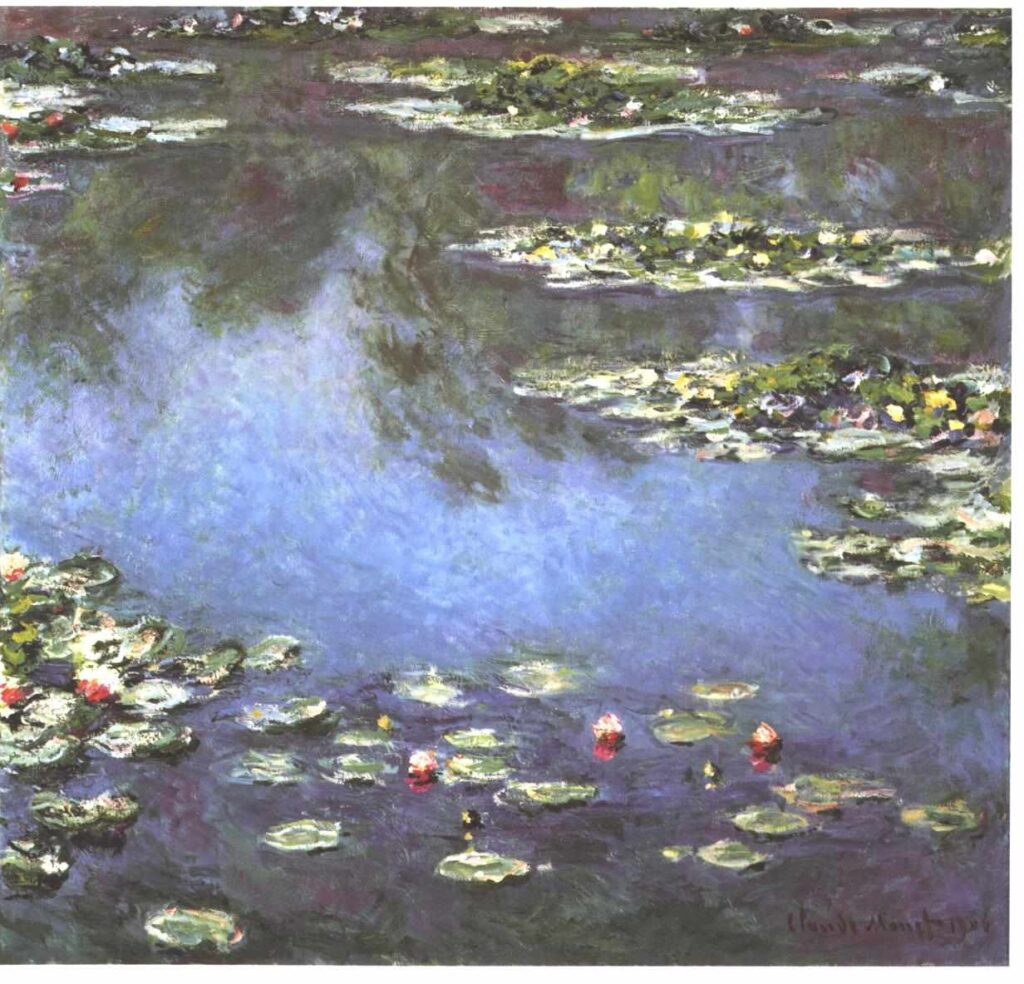
Although famously Monet told the papers he didn’t even have an indoor studio and was constantly photographed painting outdoors, this was untrue. While he preferred painting outdoors, sometimes this just wasn’t possible, and he had his largest studio yet, built in Giverny. It was a converted greenhouse which meant it was well lit and even contained skylights. In this studio and outside in the garden, he would obsessively paint the water lilies. He painted them continuously for the next 20 years of his life. As his family began to pass away around him, his water lilies remained.
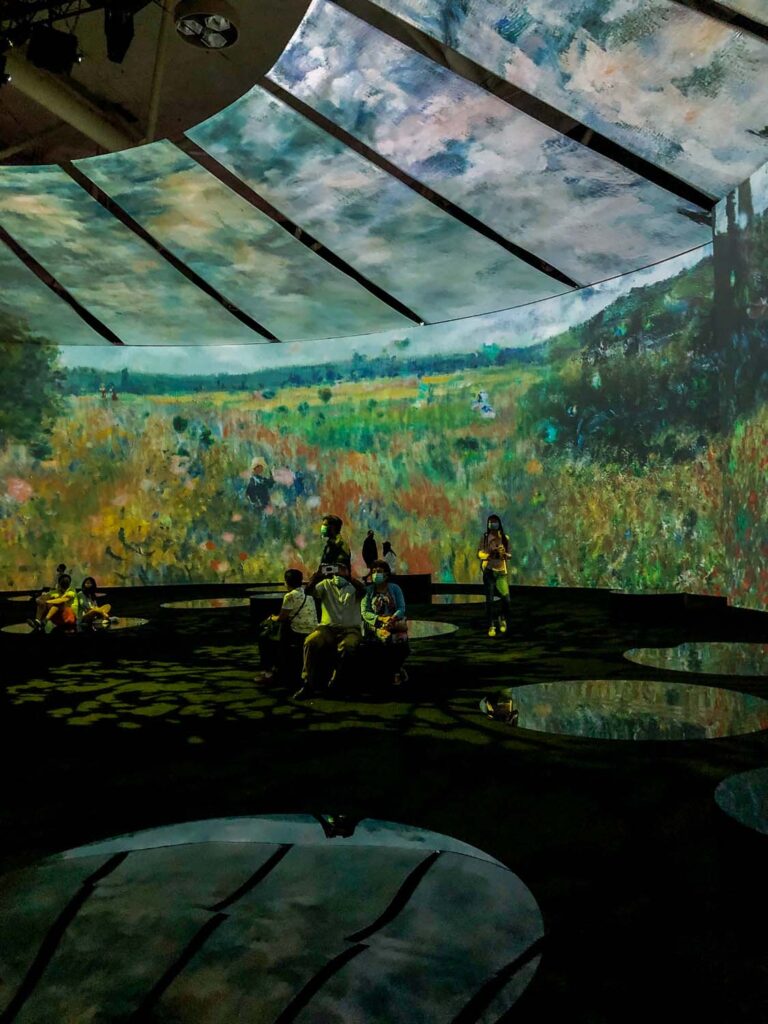
The Cataracts
In 1911 Monet’s second wife, Alice, died along with his oldest son Jean. Following this, Monet began a romance with Blanche, one of Alice’s daughters, but she also passed away in 1914. Blanche has been caring for Monet in his old age and left alone, and in a deep depression, Monet lost the will to paint. It was during this time that Monet began to develop the first signs of cataracts. This not only affected his sight but affected the way his eyes saw colour. You can see in the few paintings he made during this time how dark the hues are. He couldn’t see the light tones. His assistants even had to lay the colours out in a specific order on the palette so Monet could remember what they were.
Despite this being over a hundred years ago, surgery for cataracts was an option. But Monet was terrified of the surgery as he knew of a few botched surgeries that left the patient with no sight at all. But, eventually, the condition got so bad, he resorted to surgery. Thankfully, it was successful, and his sight was restored. When Monet saw the canvases he had made before the surgery, he had most of them destroyed, as he was appalled at what he had been creating.
Waterlillies
With his new lease on life, Monet went back to painting. But this time with one last mission. It was World War I, and his youngest son Michel was sent to war. In his garden in Giverny, Monet could hear the echo of gunfire where he sat. The sound haunted him. He created a series of paintings that would serve as a memorial to the lost soldiers of WWI. These featured his water lilies but also featured weeping willows overlooking the flowers. After exhibiting these paintings, the French government approached him to create paintings for the French public.
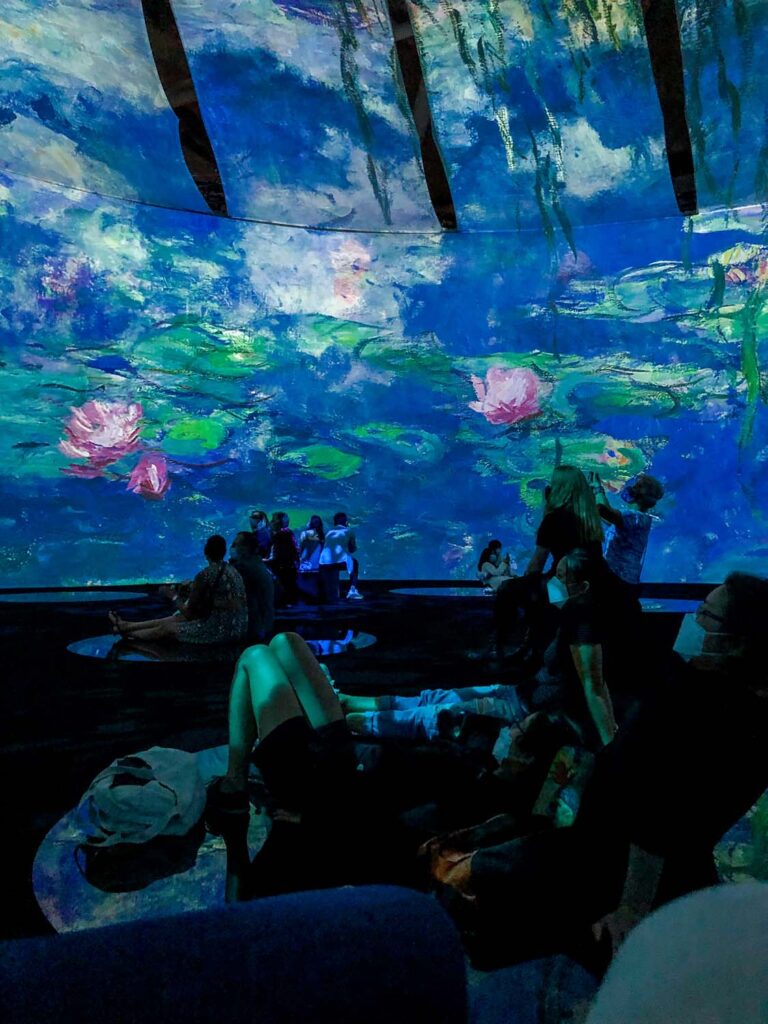
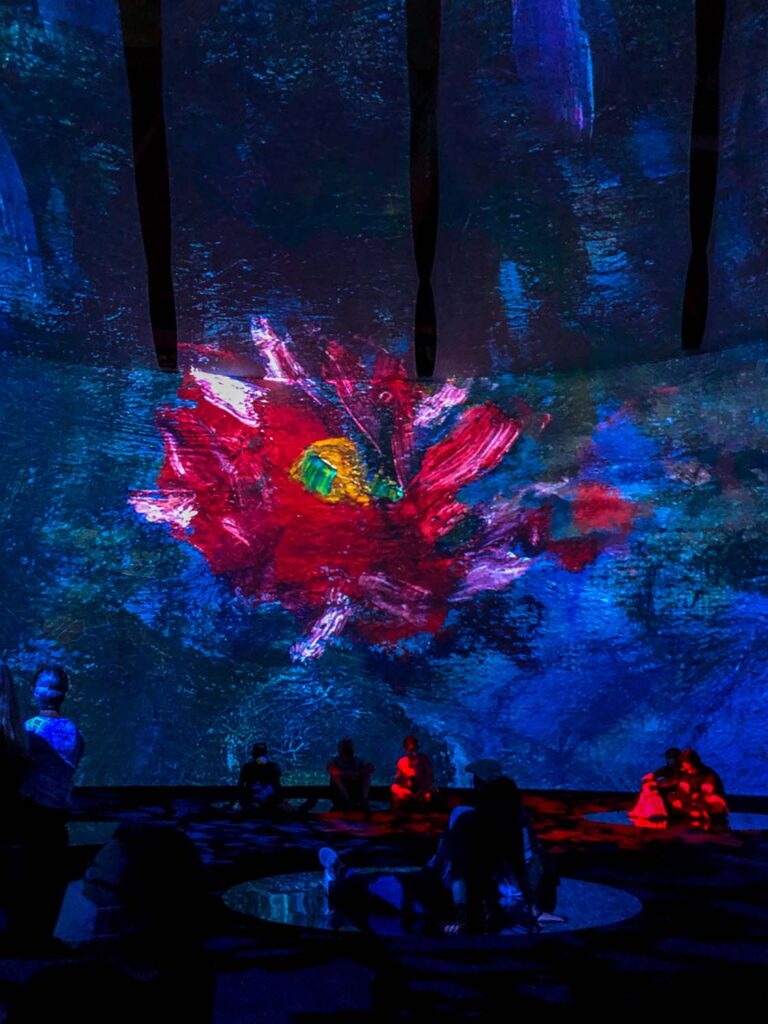
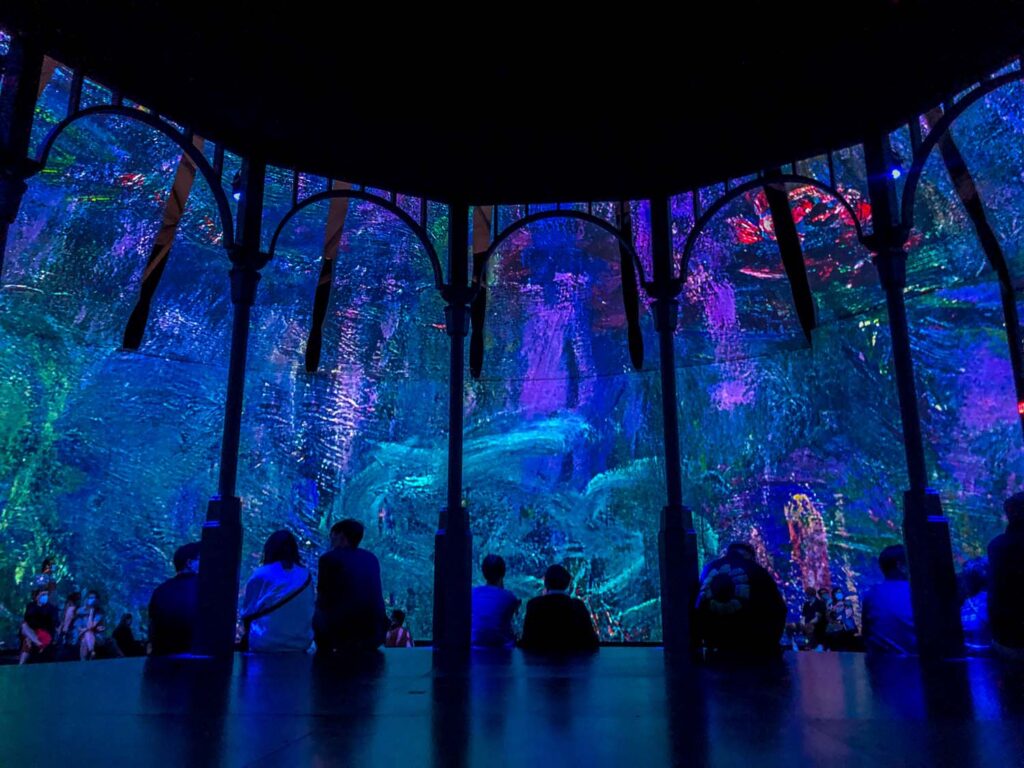
Waterlillies for the Orangerie
Monet worked directly with the architect of the Orangerie in Paris to create a special room just for his paintings. Unlike anything he had made before, these would be 8 enormous curved panels that would cover over 200 sq/meters and envelope the viewer. Monet and the architect not only designed the room to be round but also incorporated a large skylight. This skylight would allow the paintings to change as the direction of the sunlight burst through the room. It is now viewed as one of the first art installations.
“Water Lilies’ is an extension of my life. Without the water, the lilies cannot live, as I am without art.”
Claude Monet
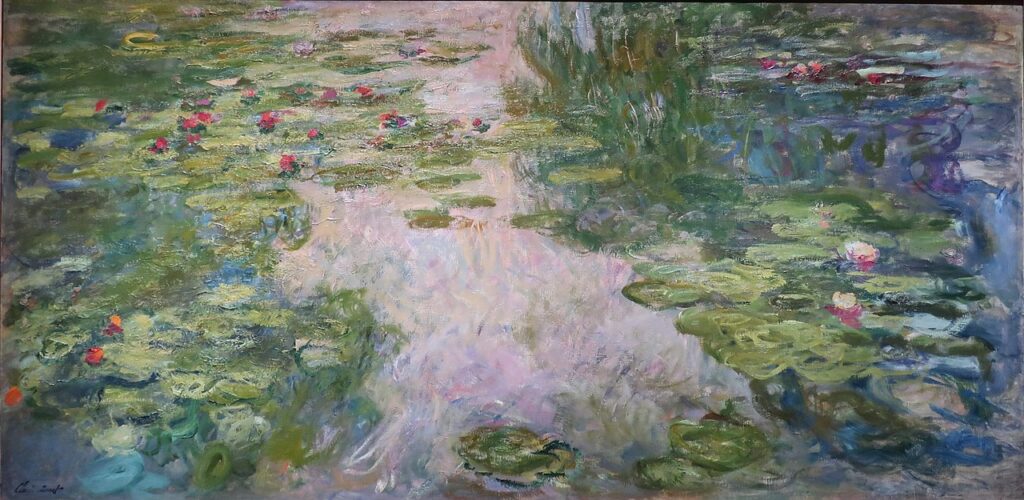
The paintings themselves gave the viewer the impression of an endless field of waterlilies. But the water is dark, and if you squint, the flowers are lost and instead, it feels like you are standing in an endless hole. The water is a wave with no horizon or no shore. This was how the soldiers on the battlefield would have felt as they fought in their endless battle. Drowning in the dark, covered in mud and without a sense of hope in sight. And yet here, the flower bloom, a sign of hope. Throughout the room, you can see hints of the weeping willow trees, who mourn for the people Monet has lost over the years as well.
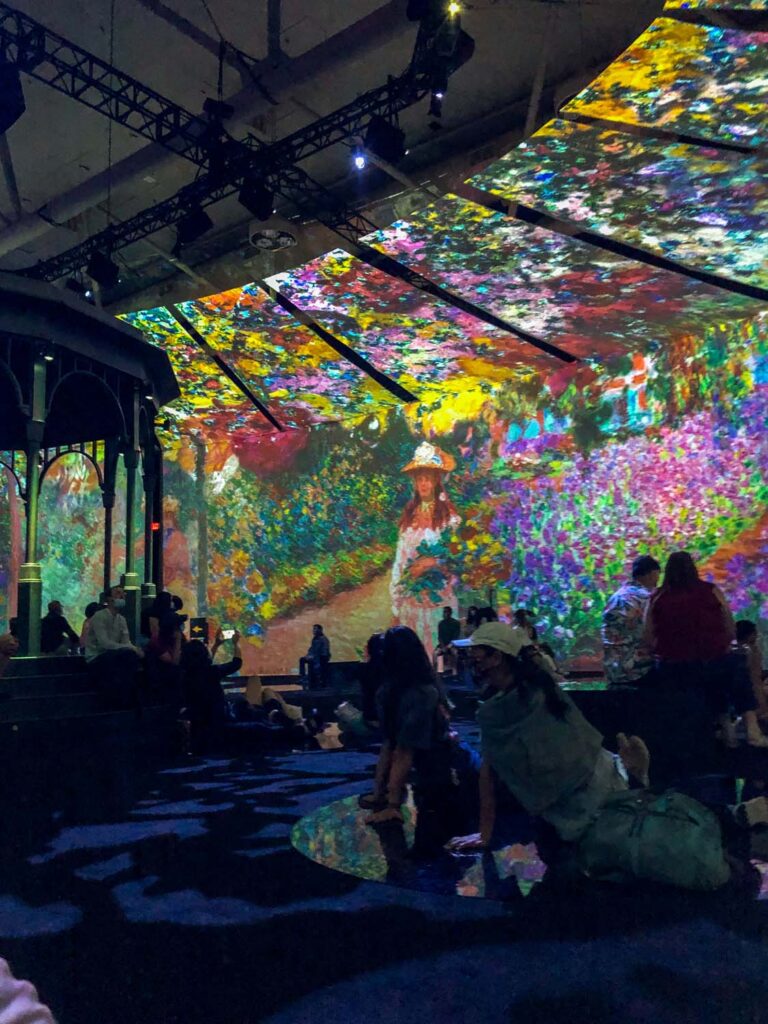
Let me know in the comment if you saw the Beyond Monet exhibit or how you feel about these digital immersive art exhibitions!
Happy Travels, Adventurers!

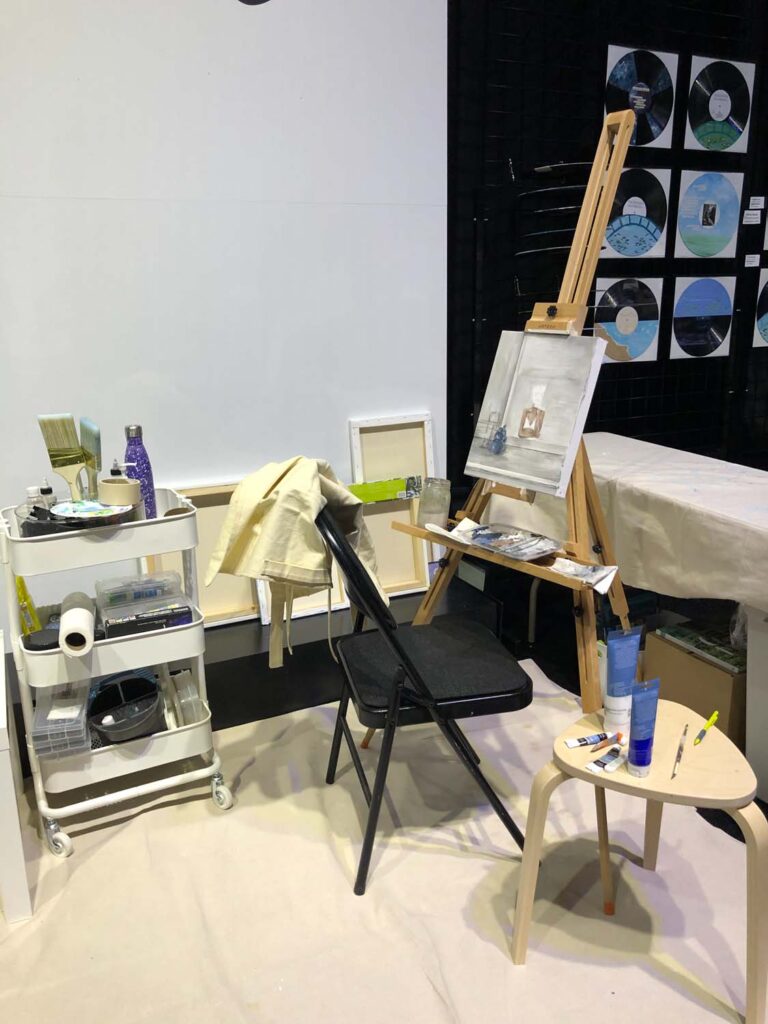
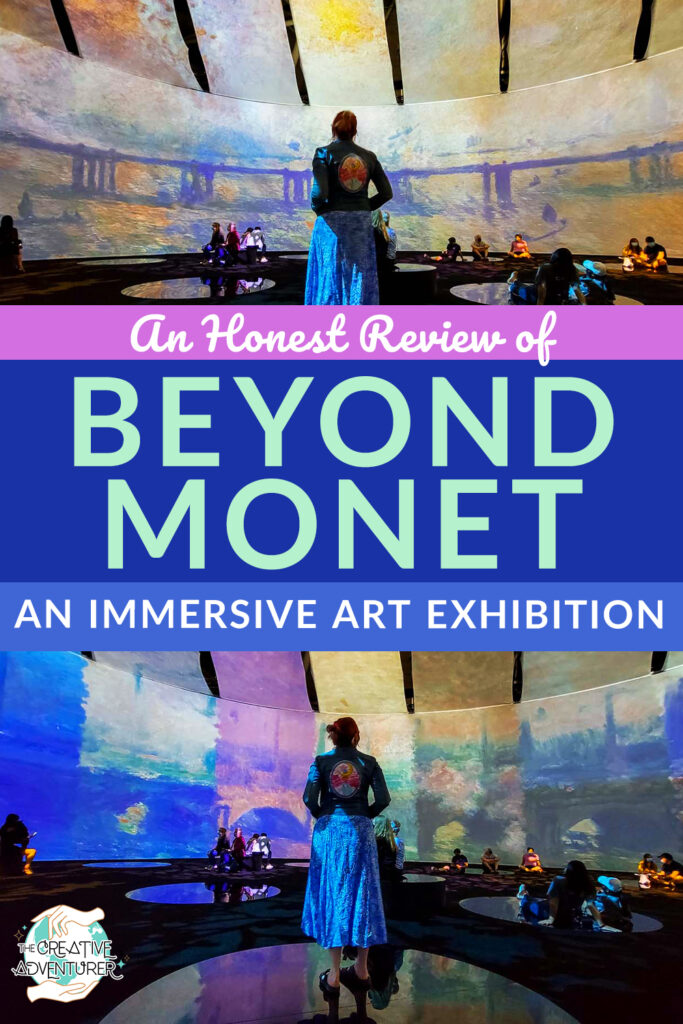
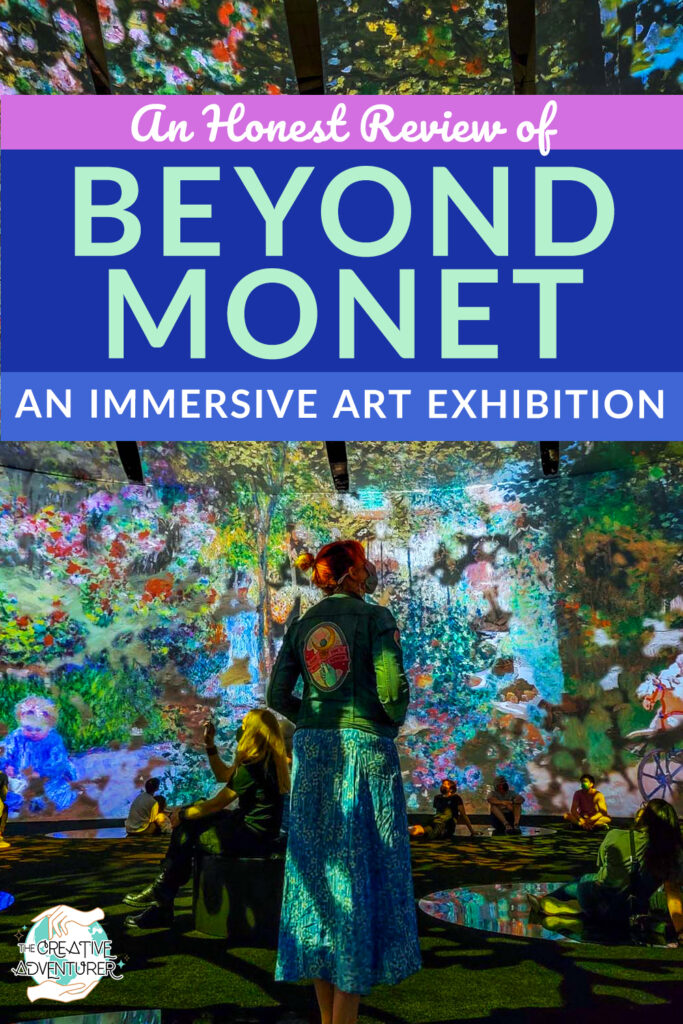

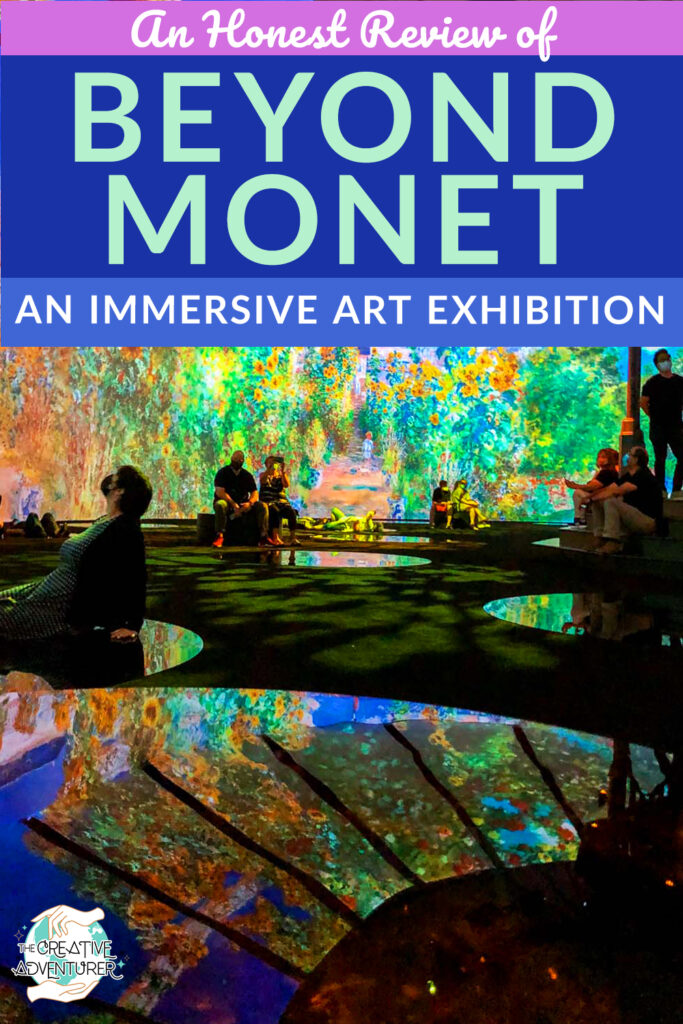
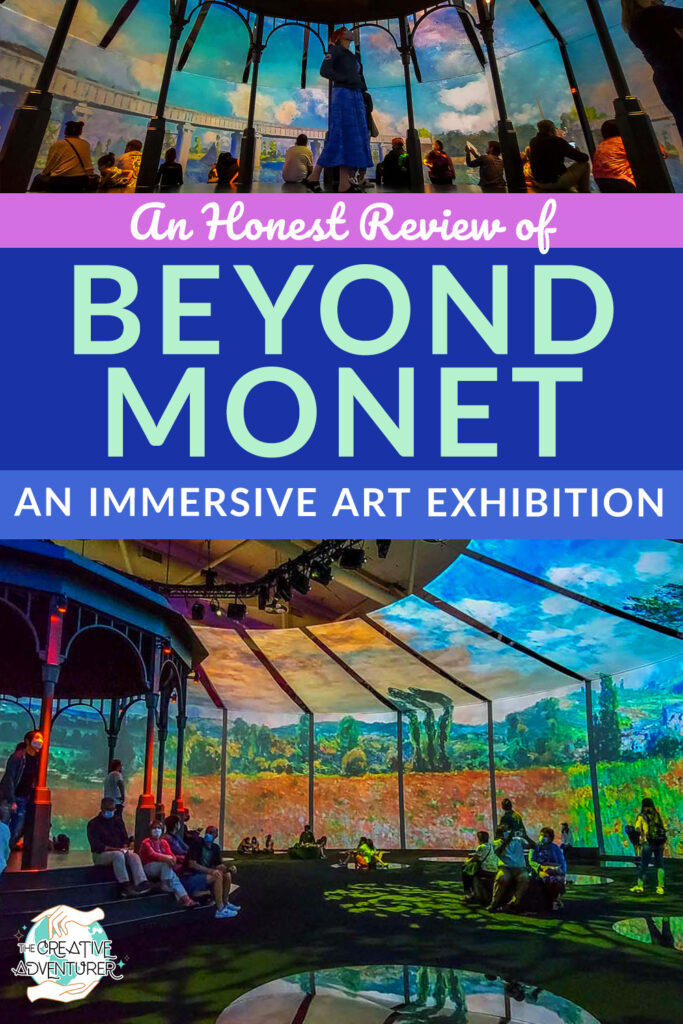
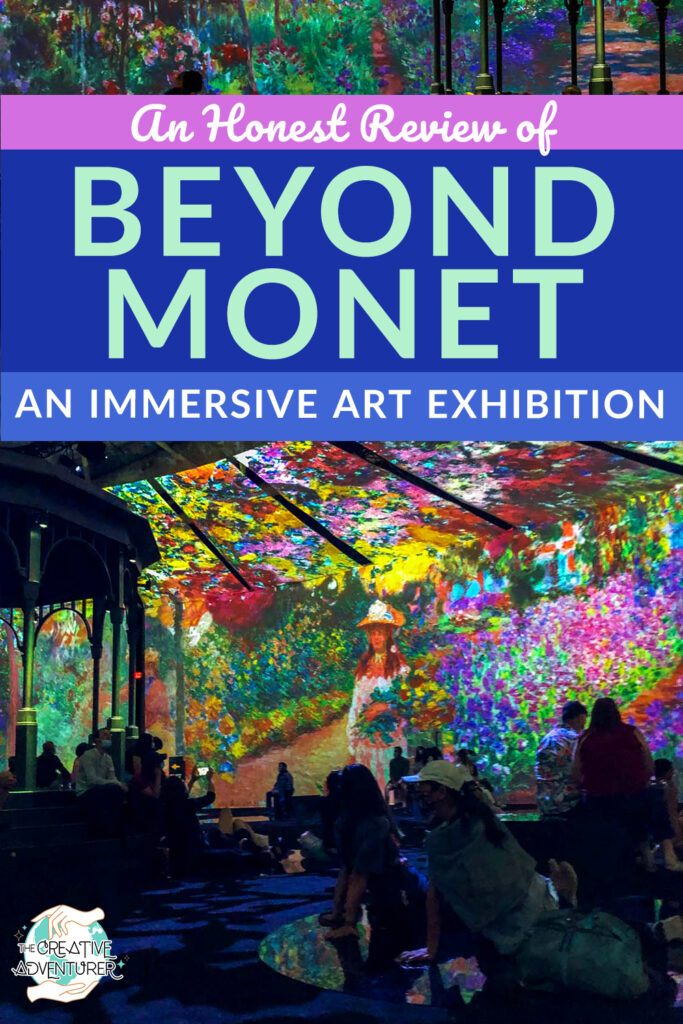


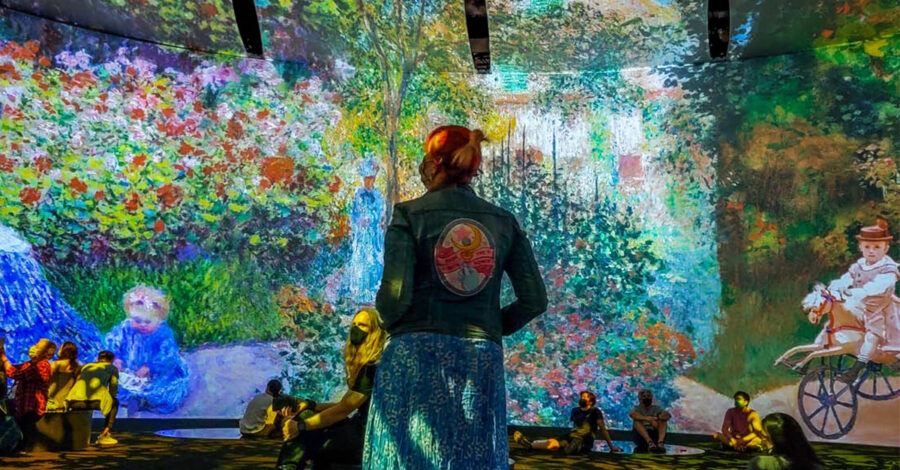

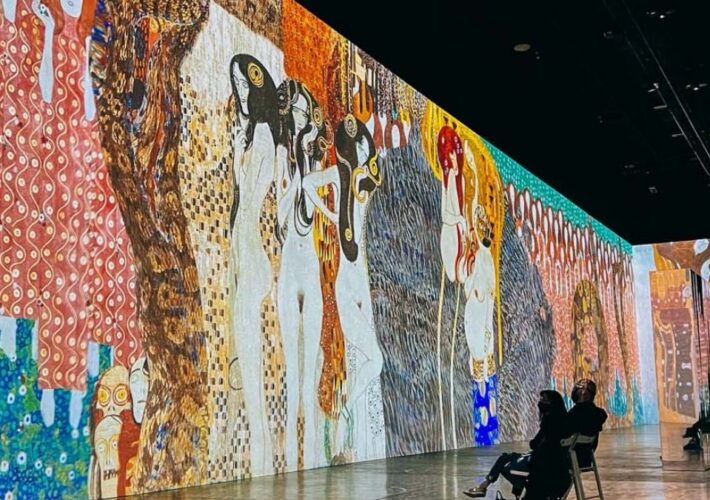

Leave a Comment